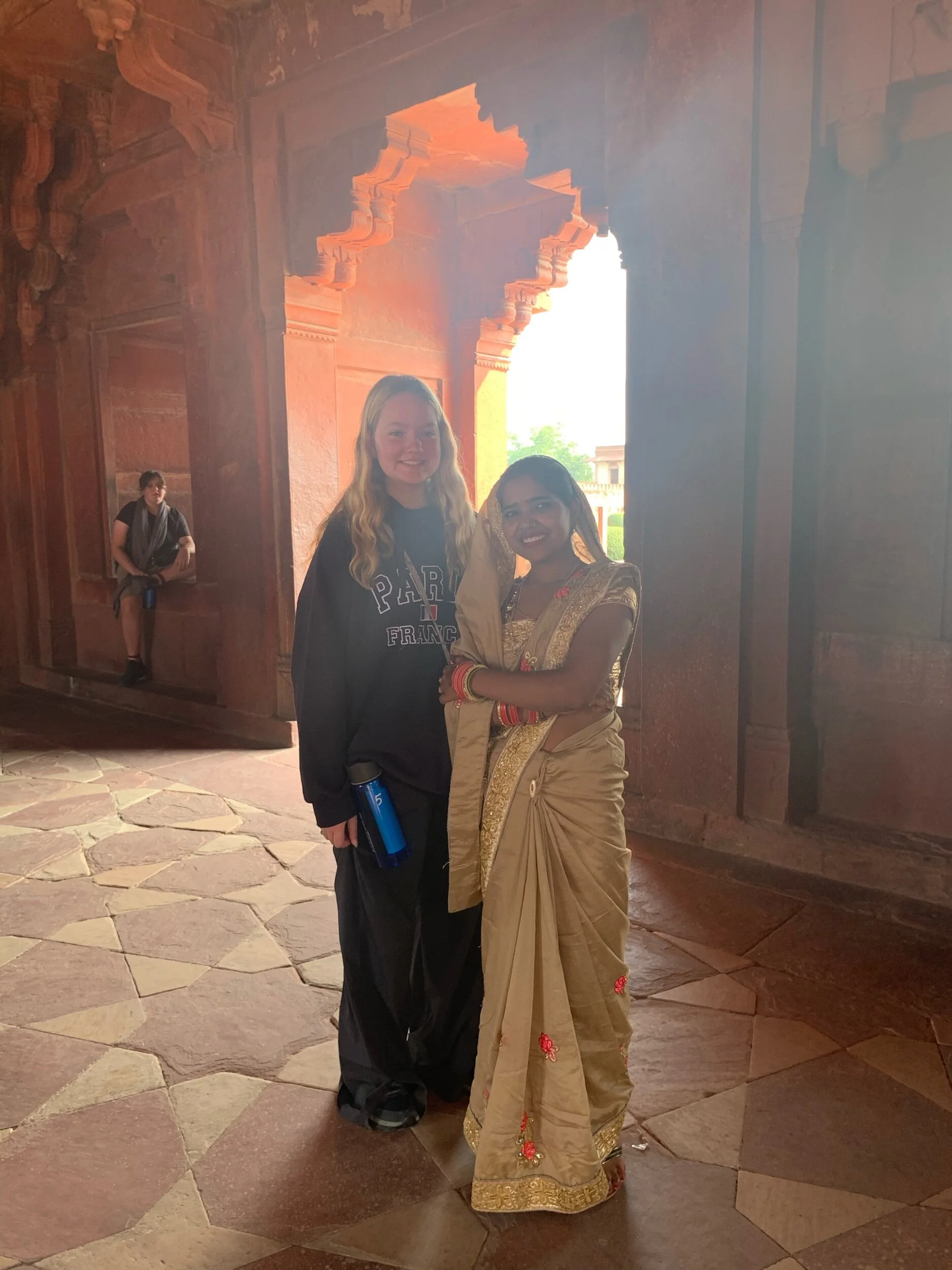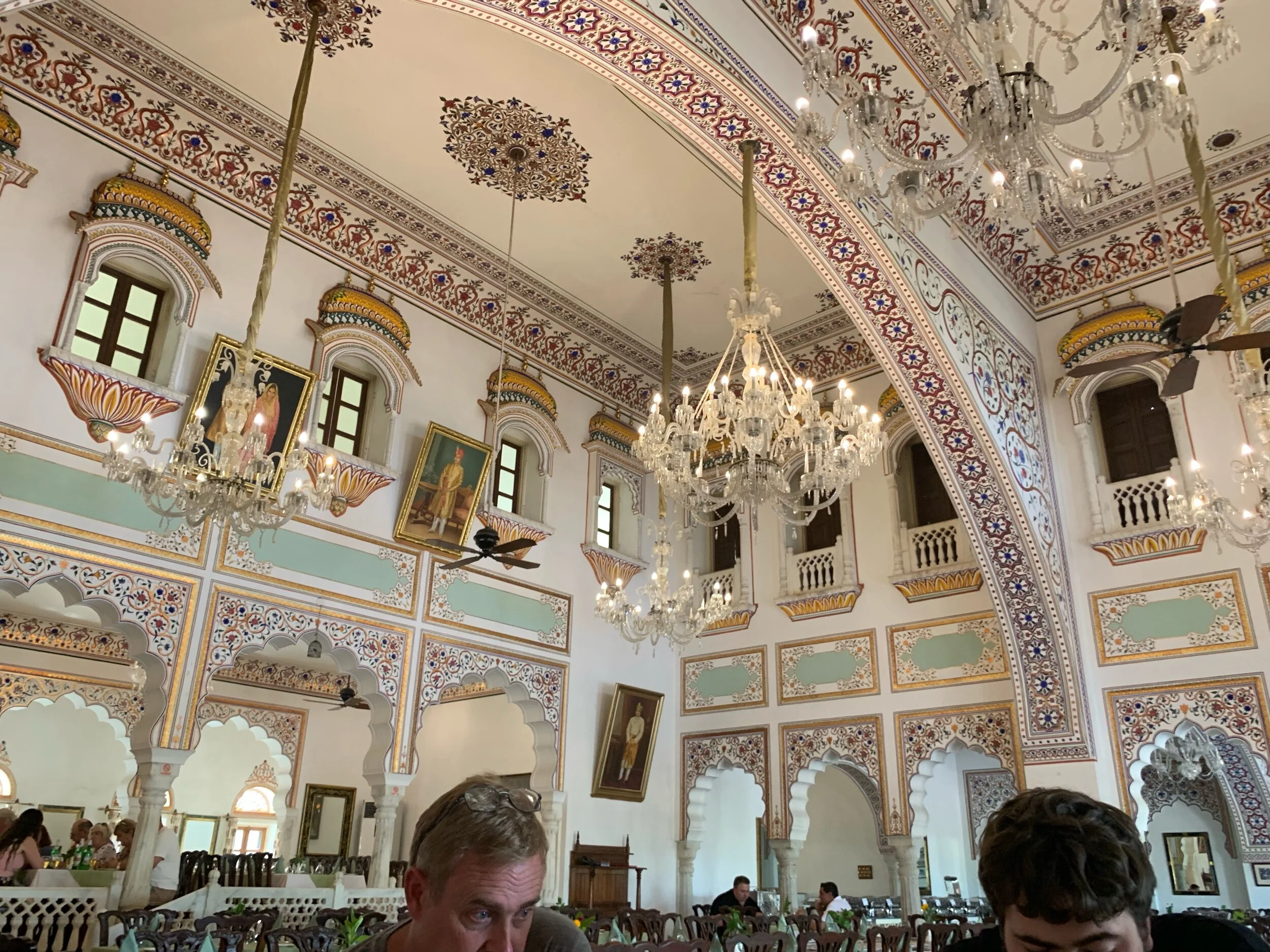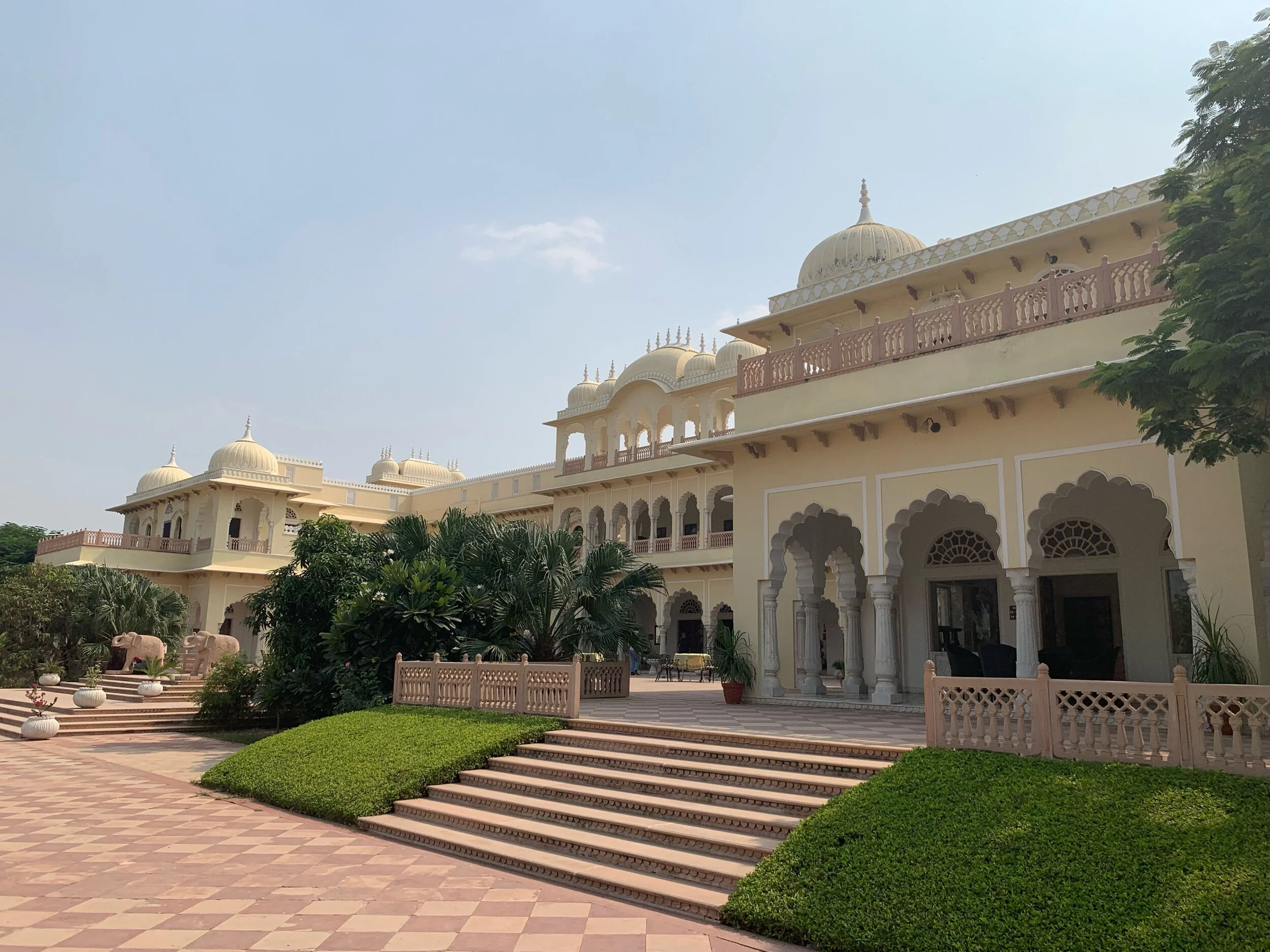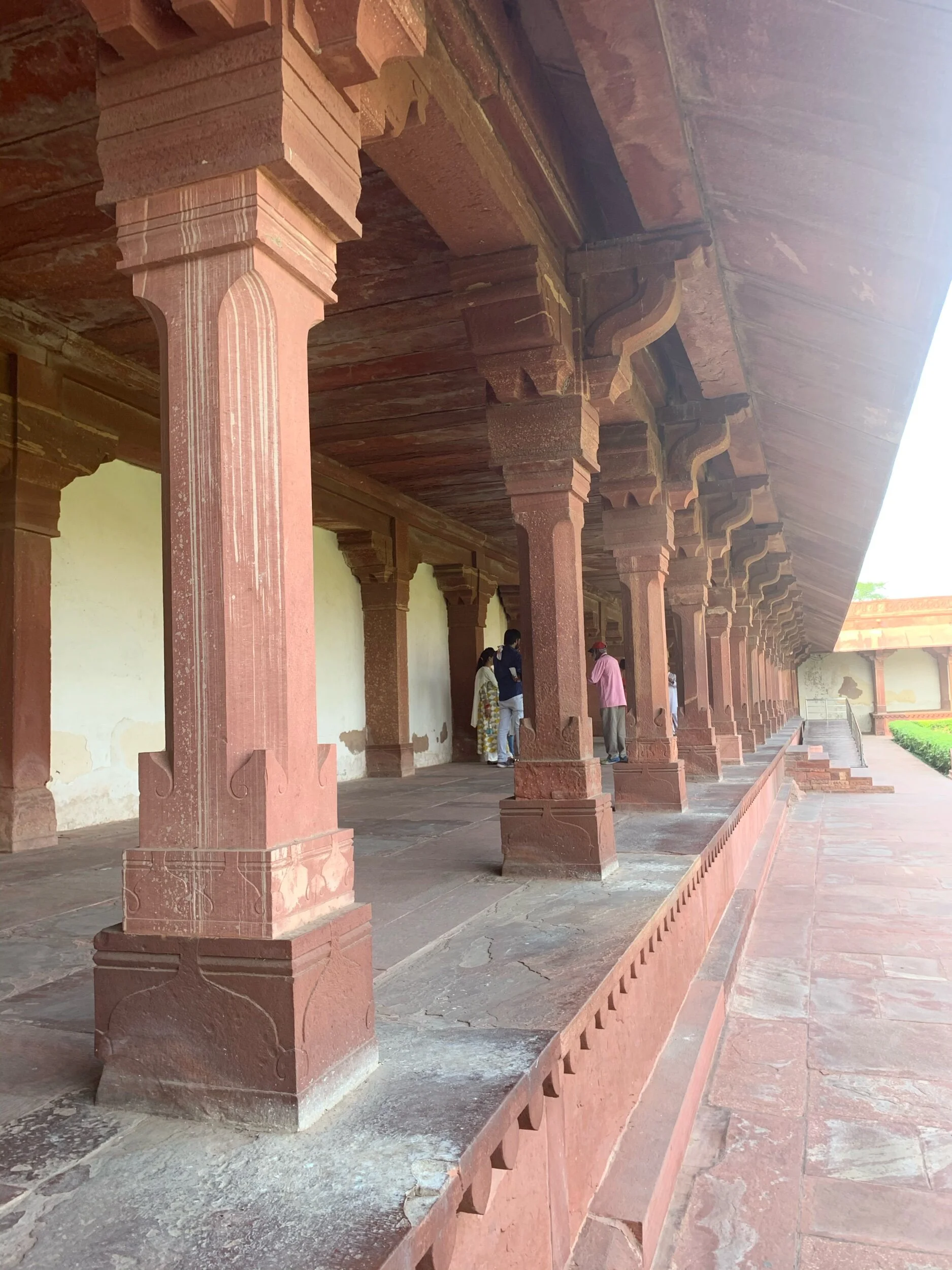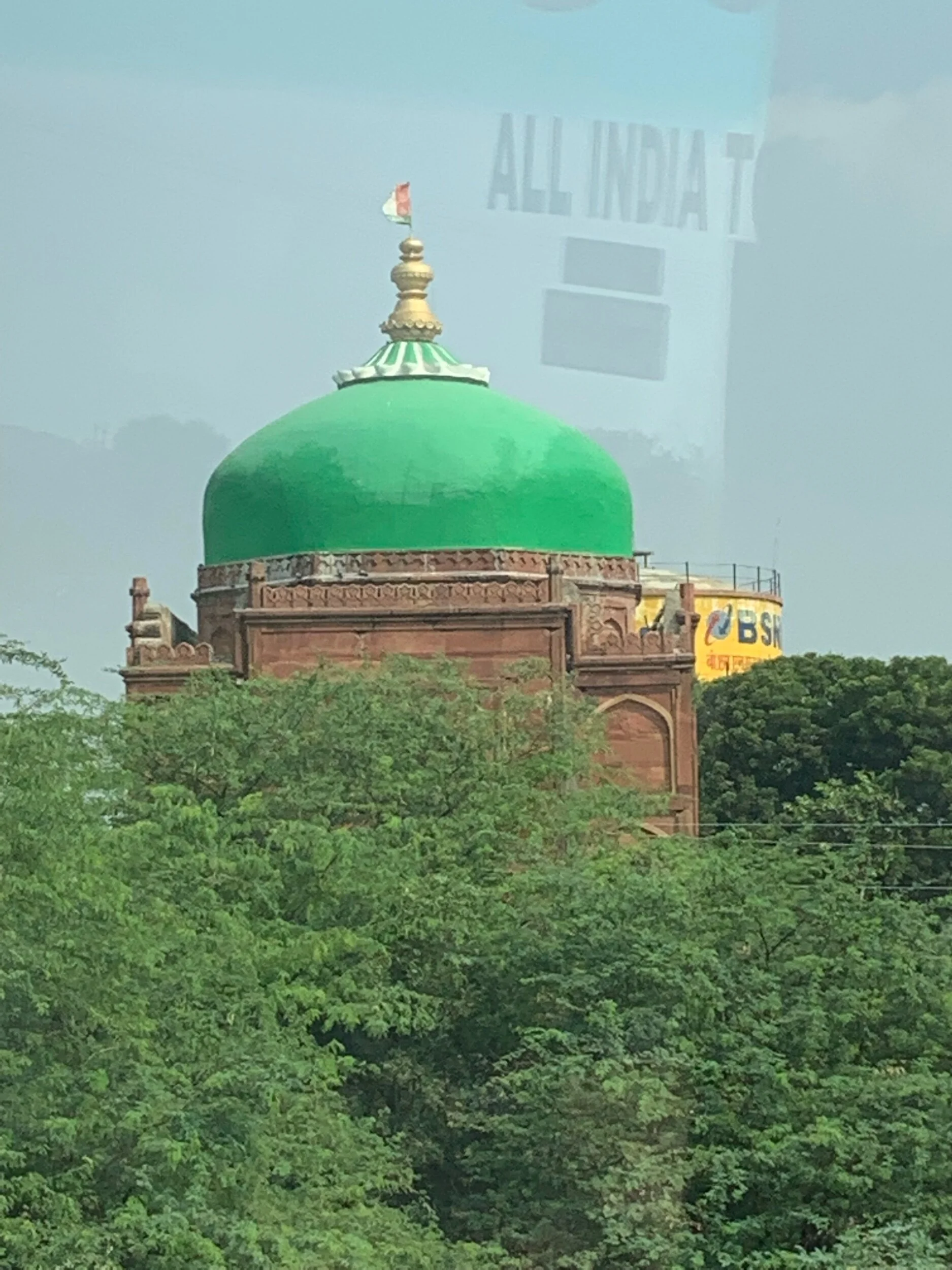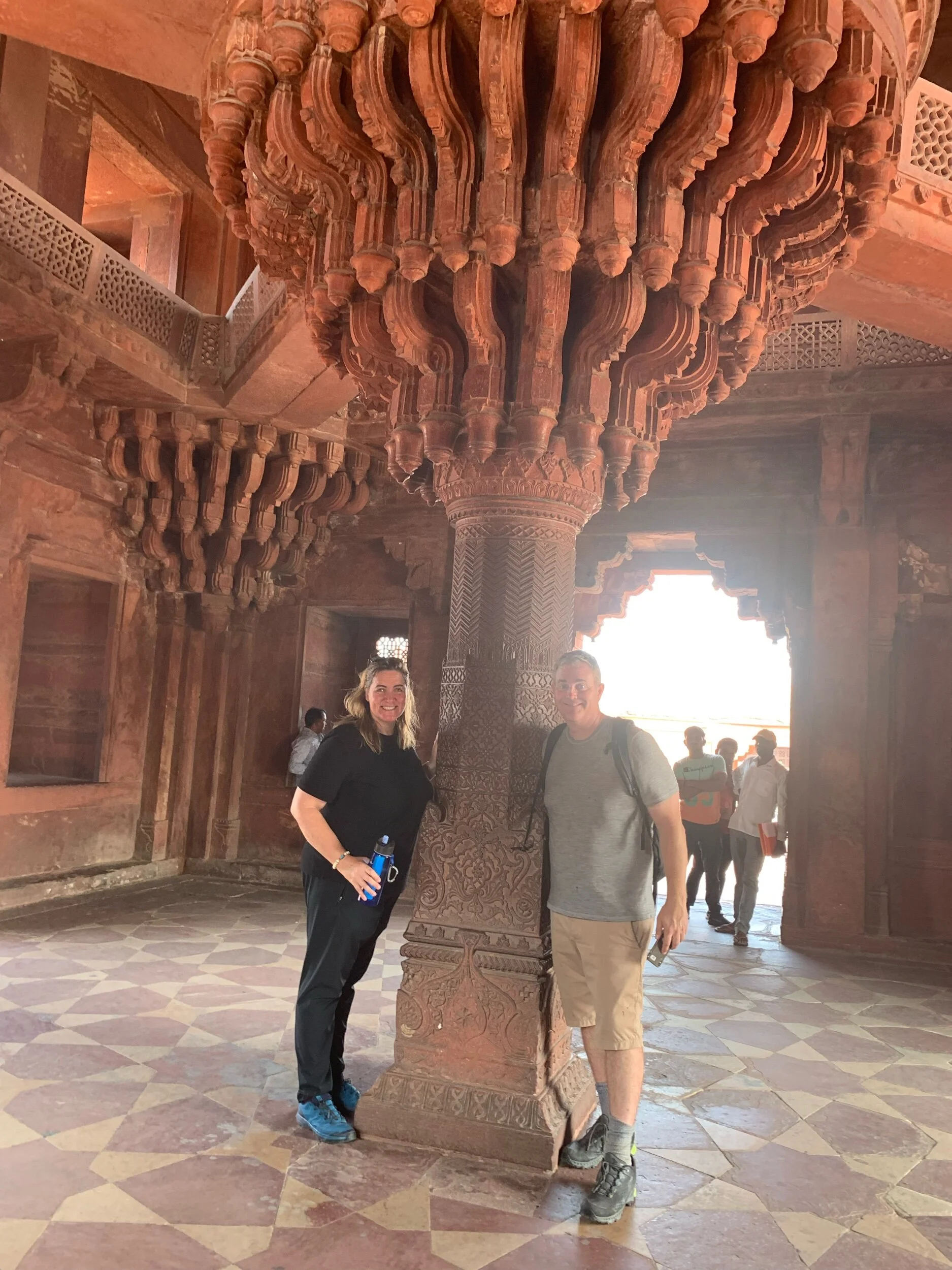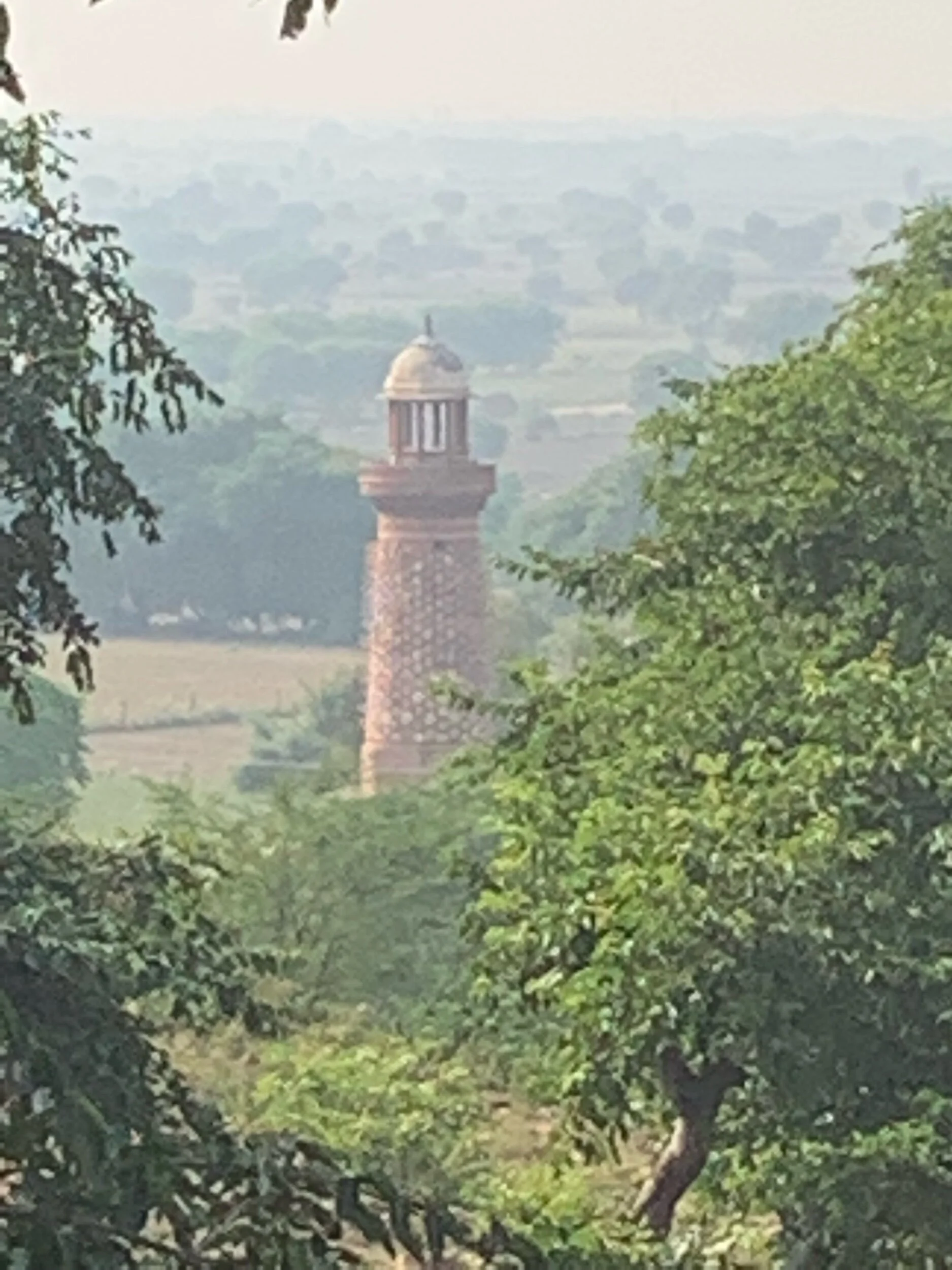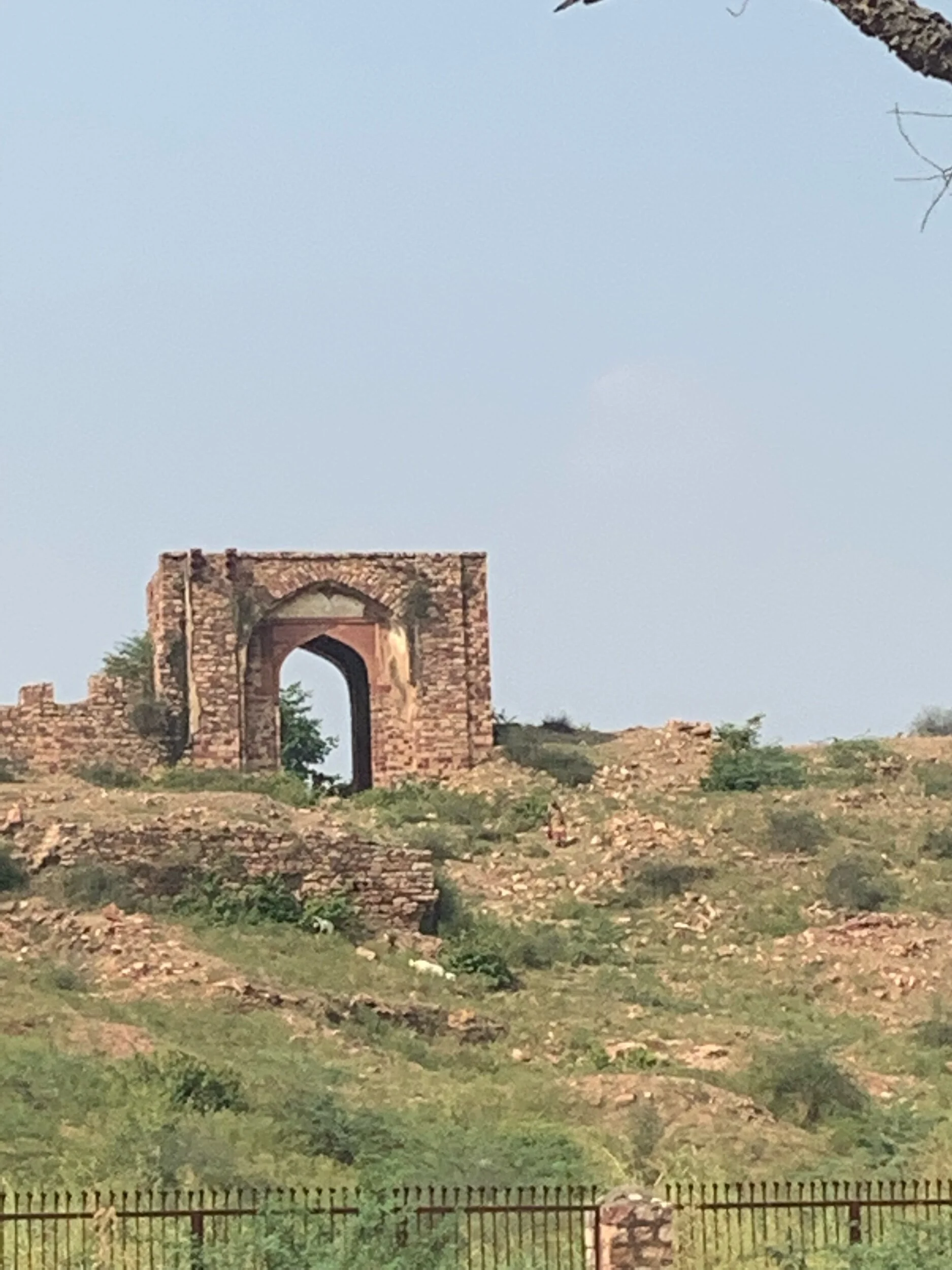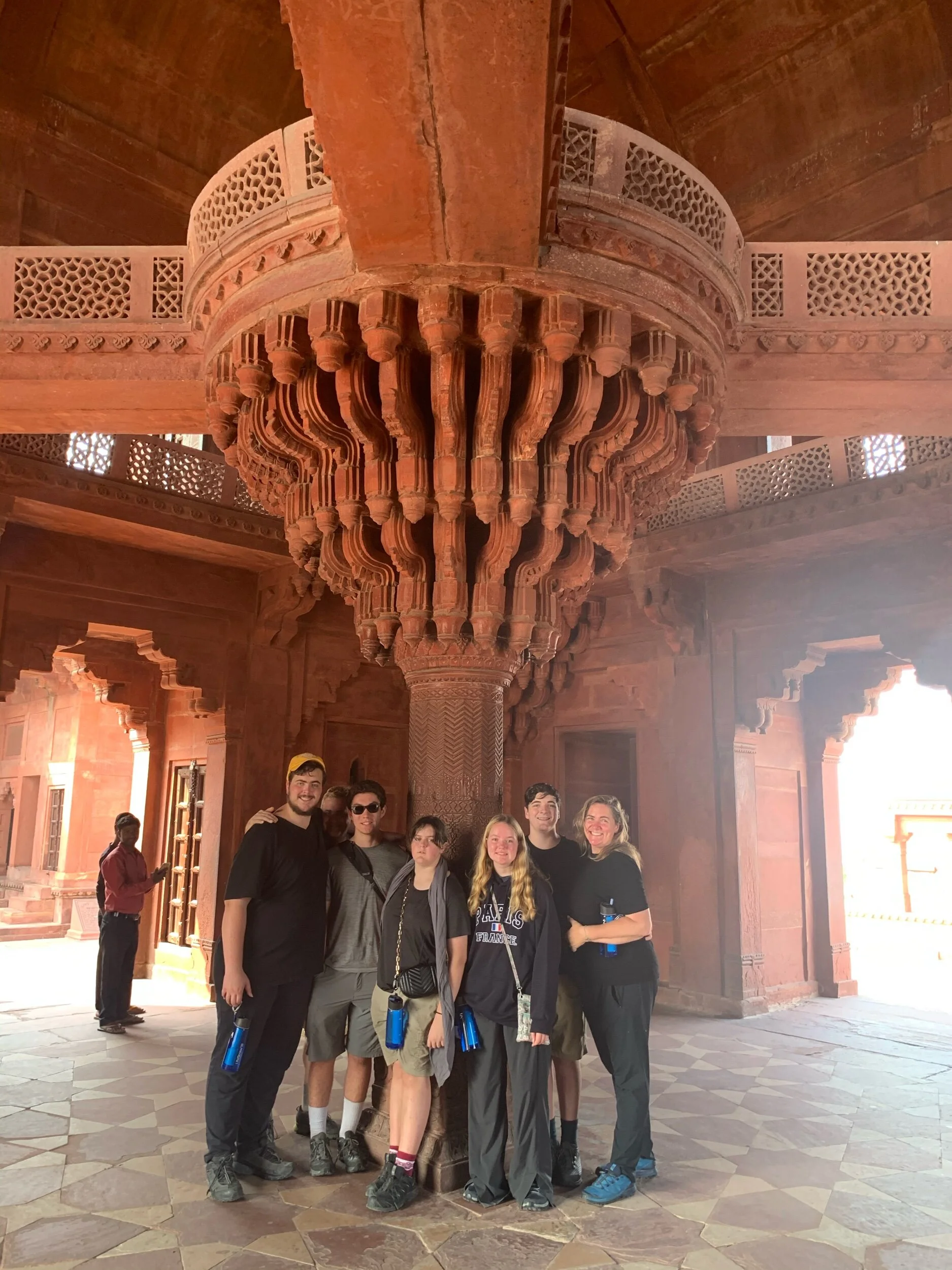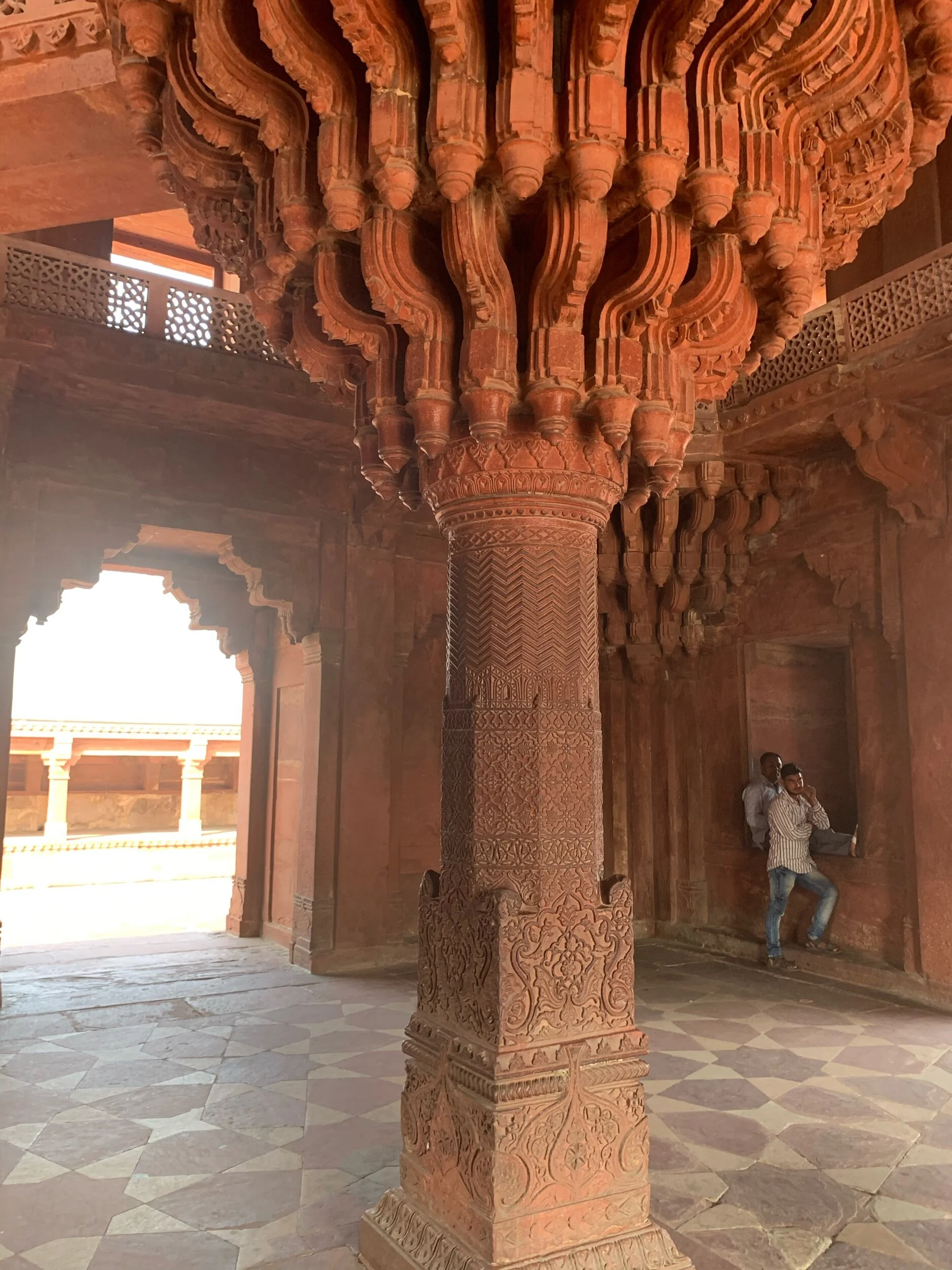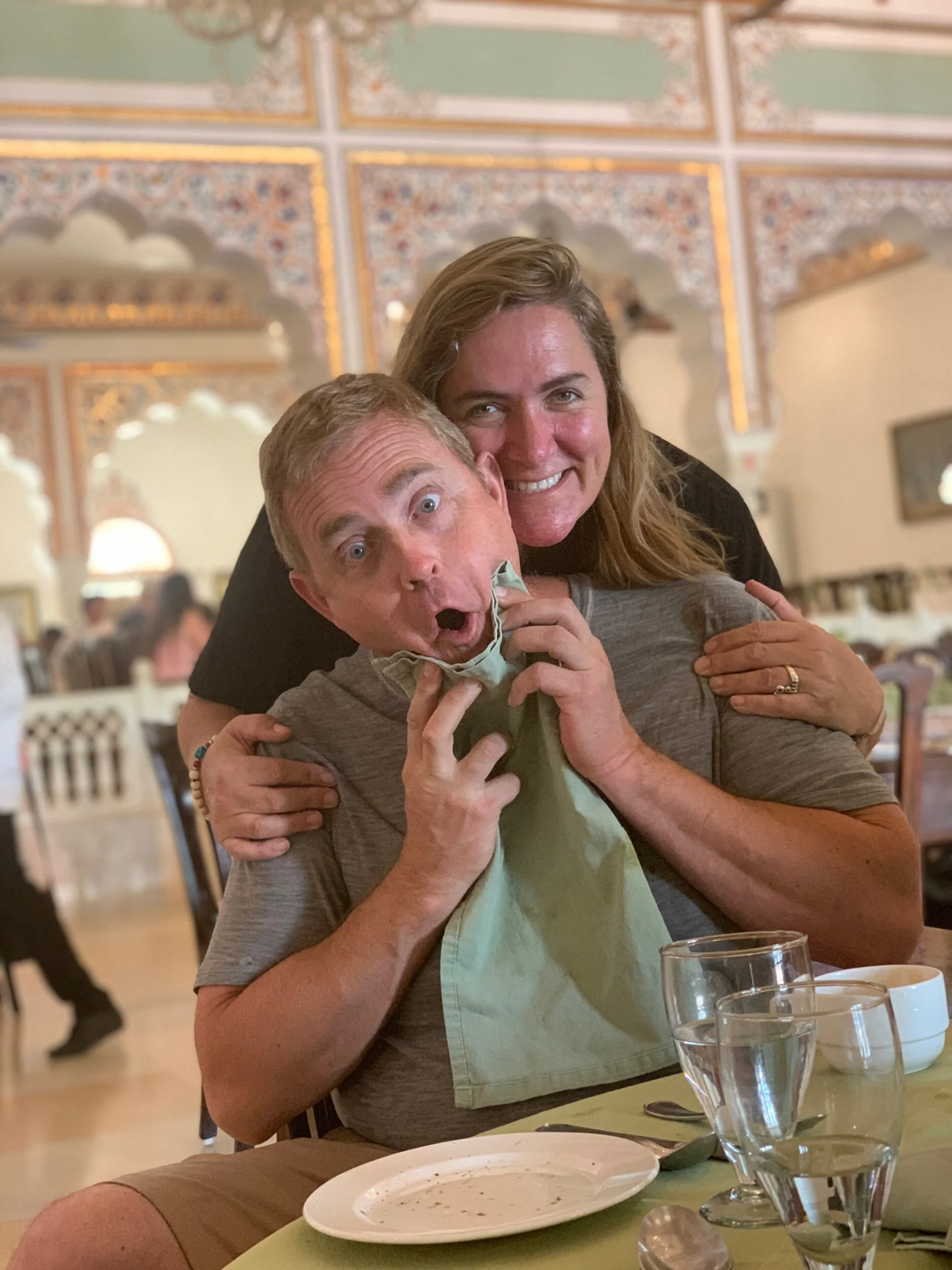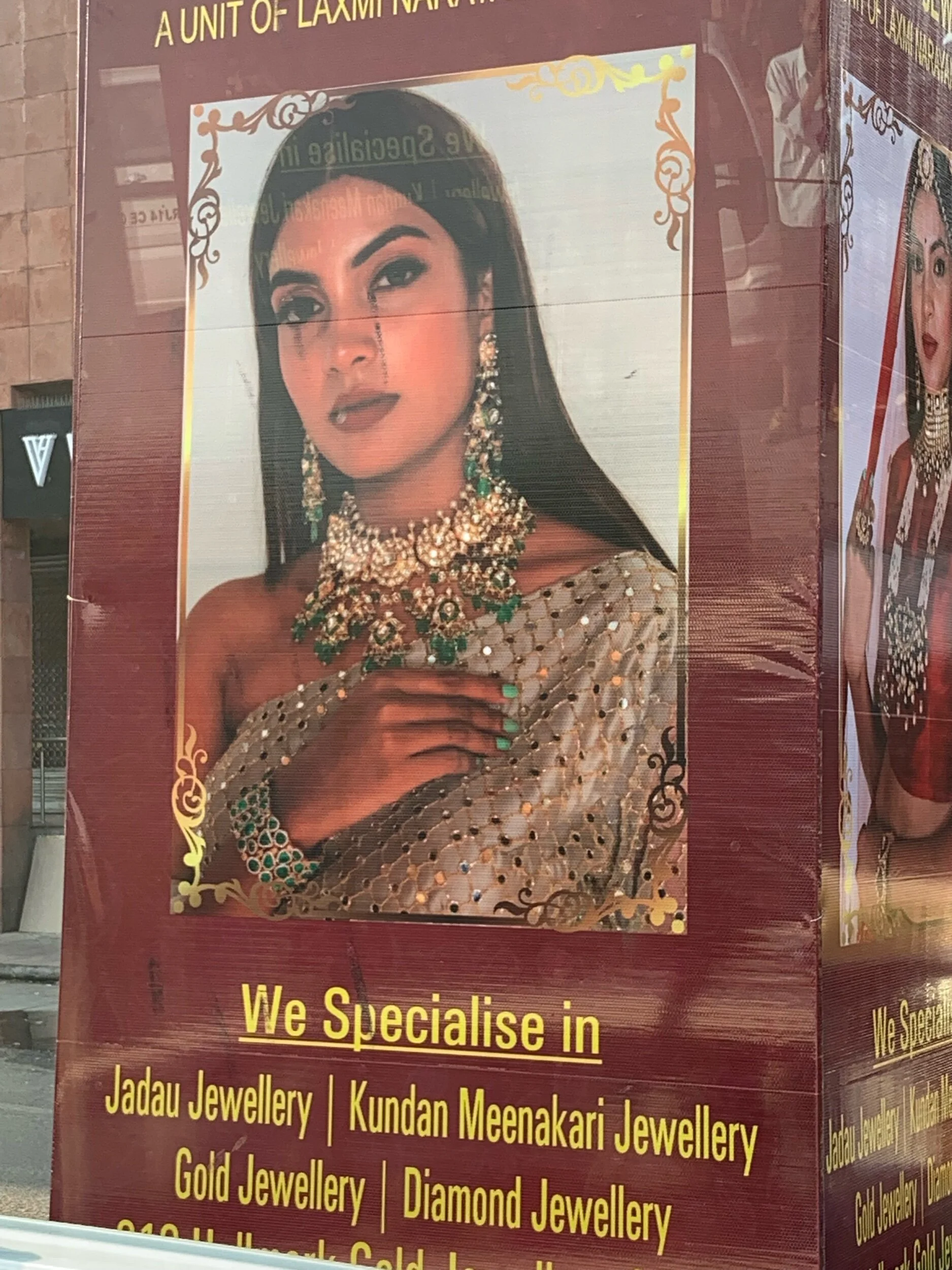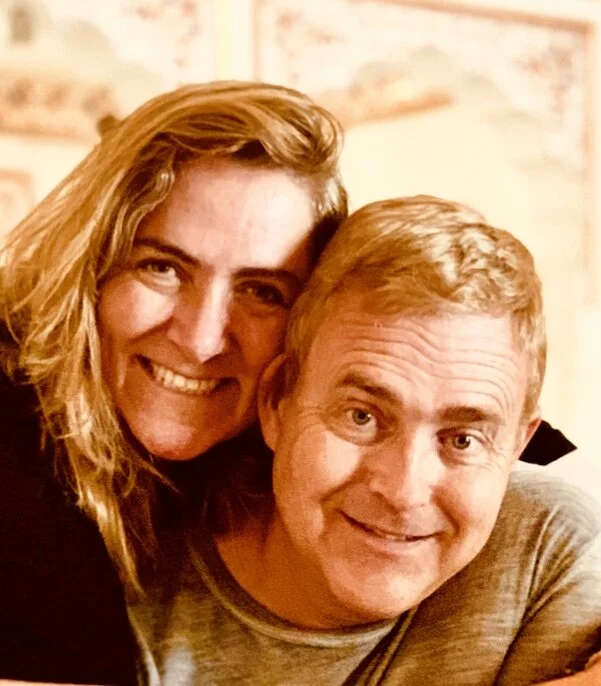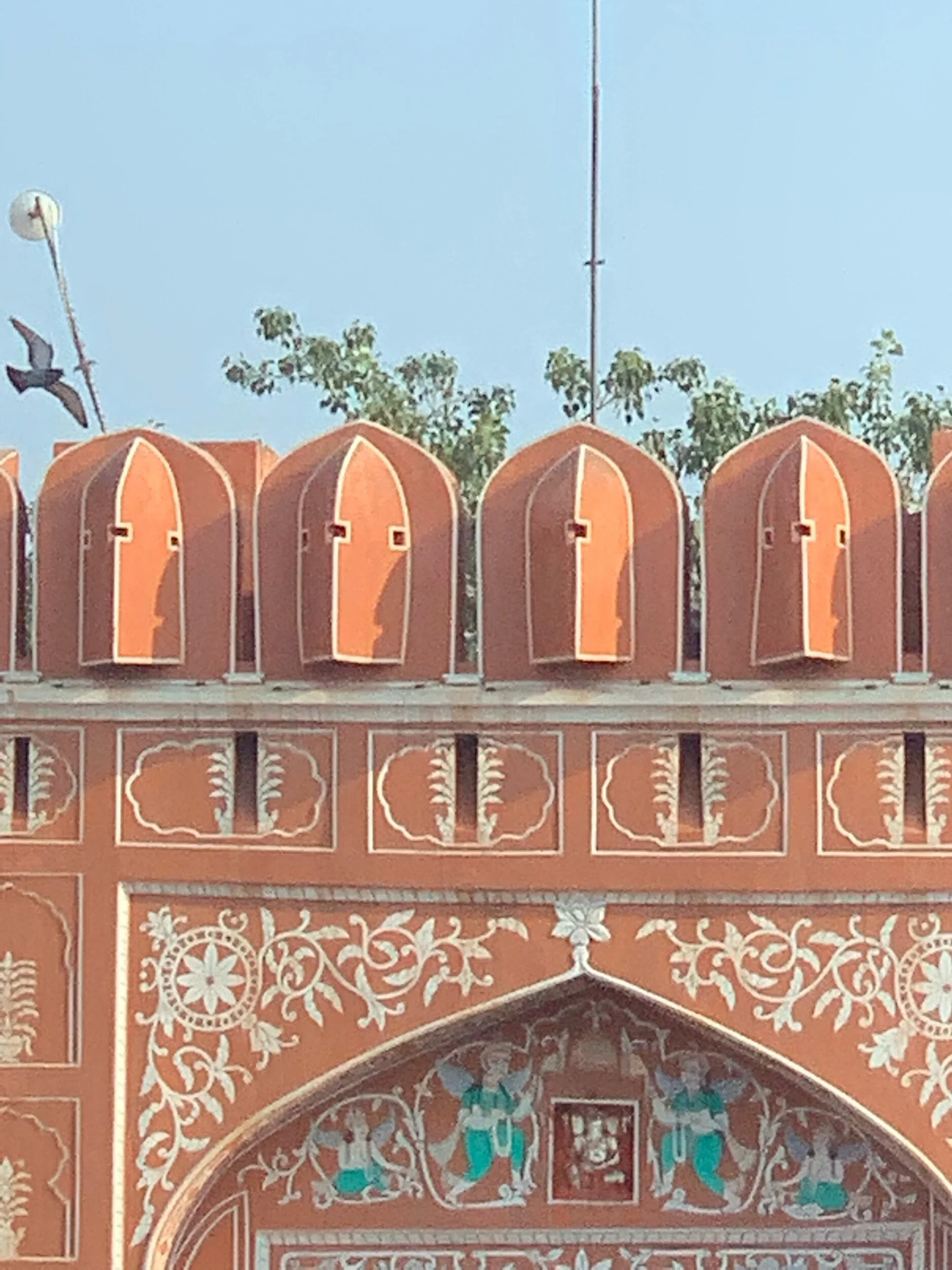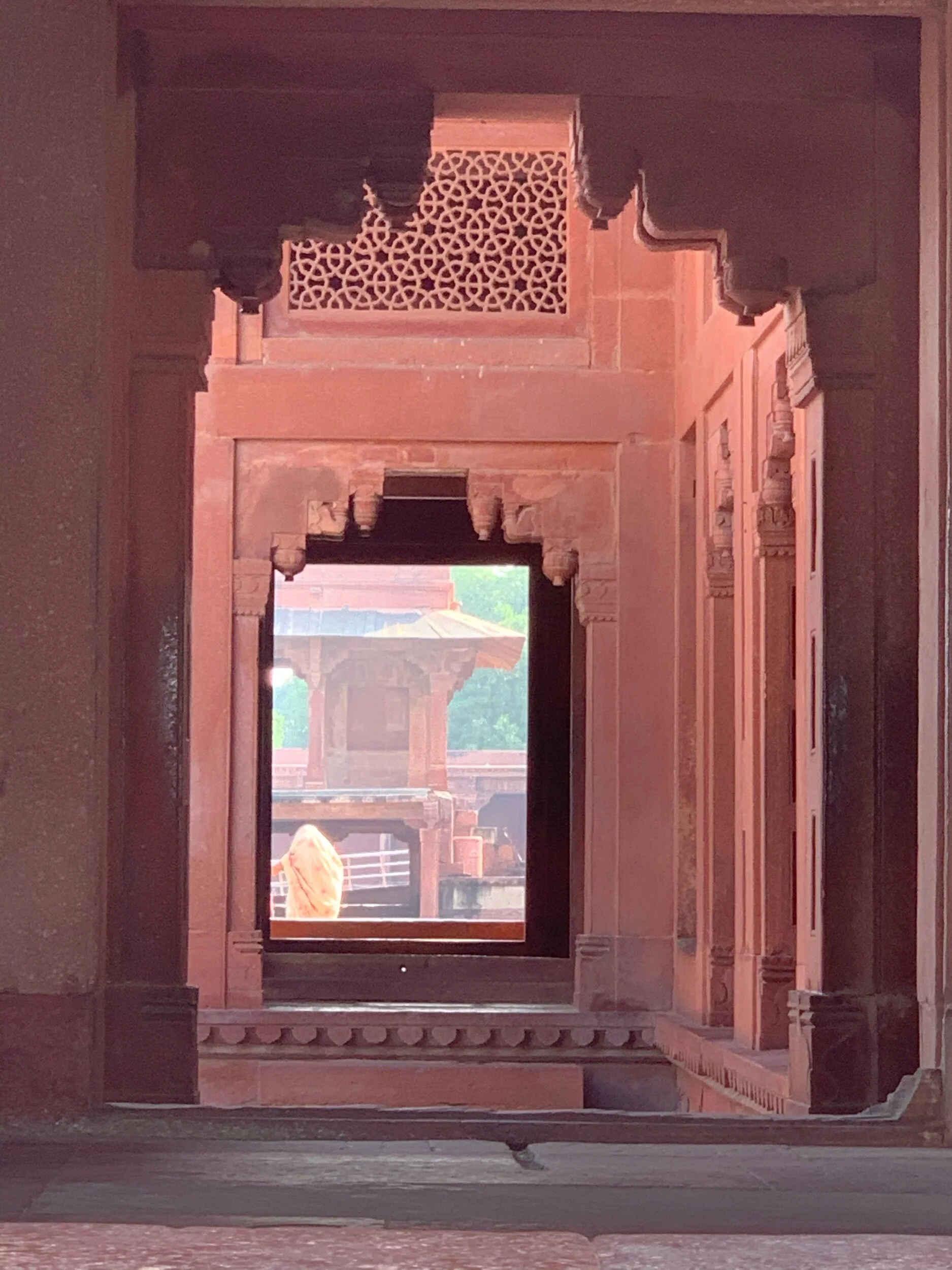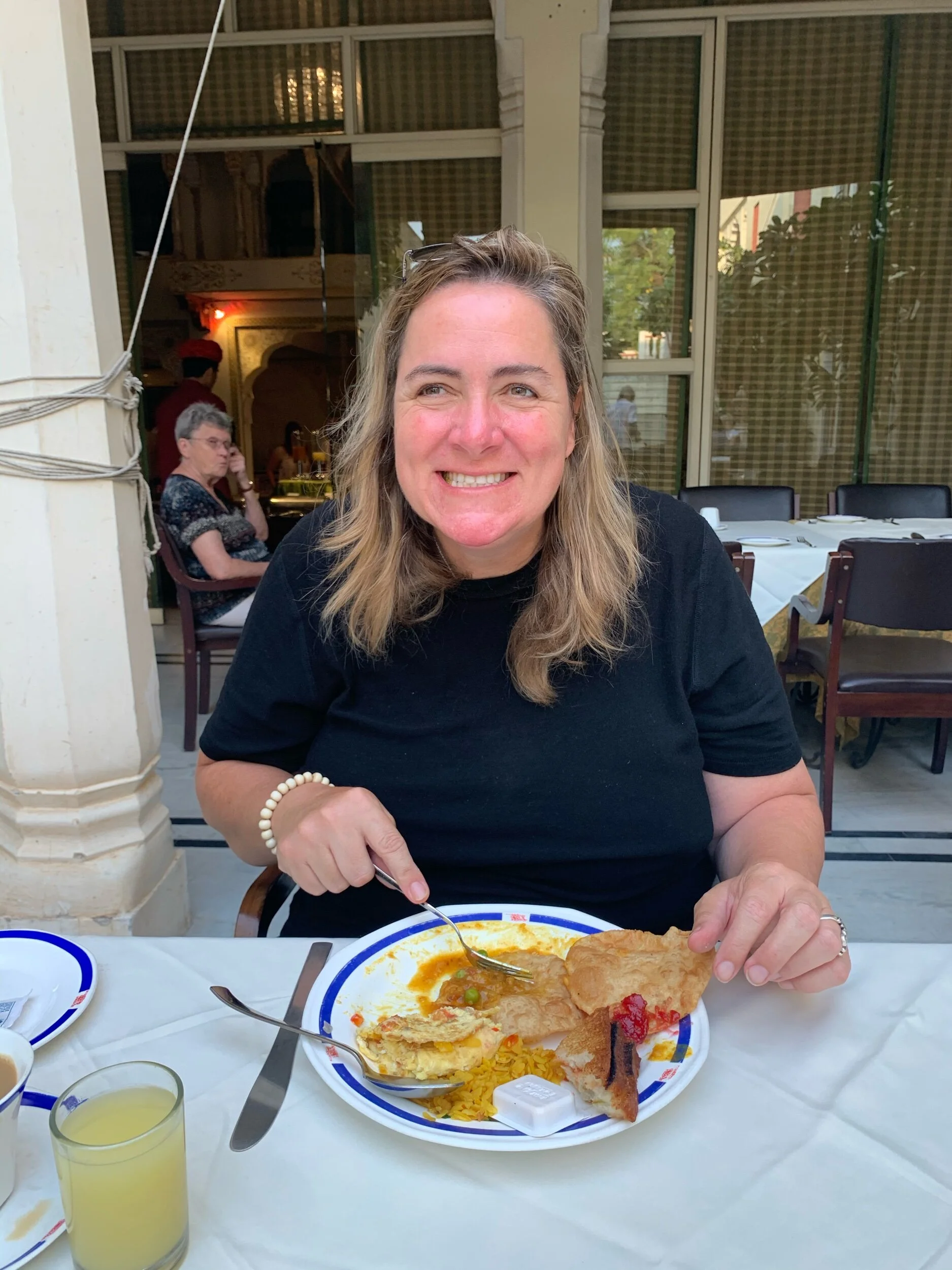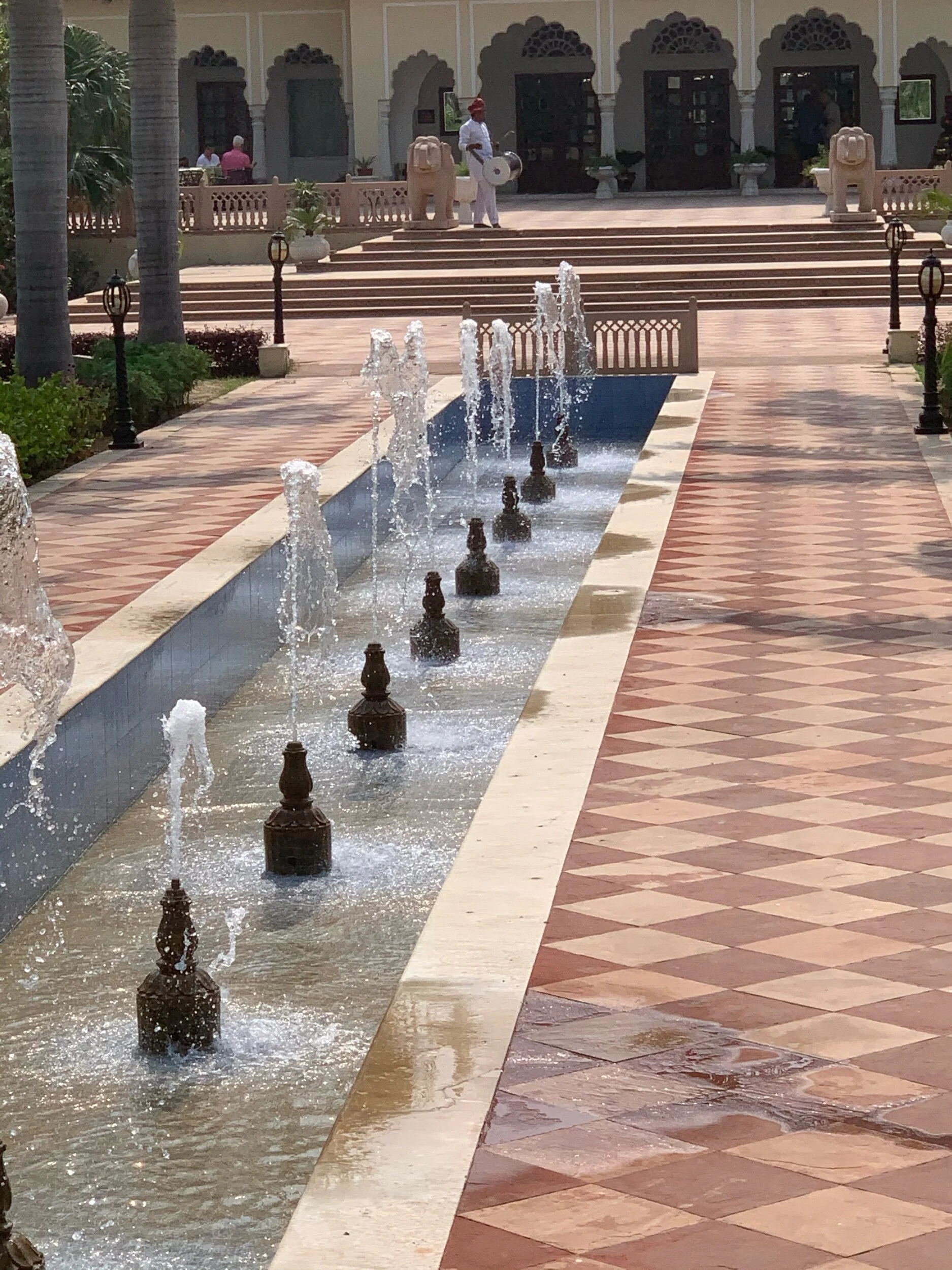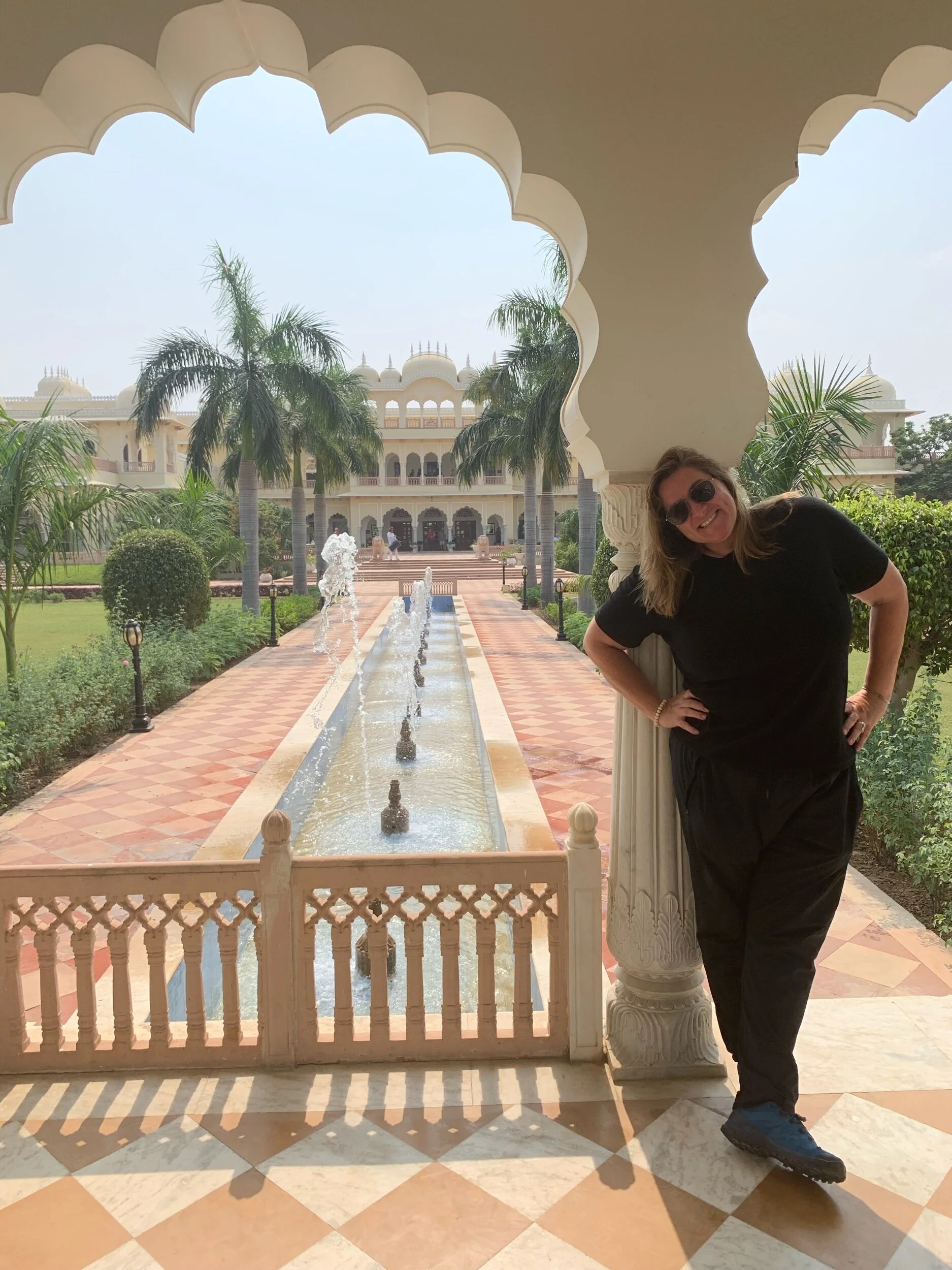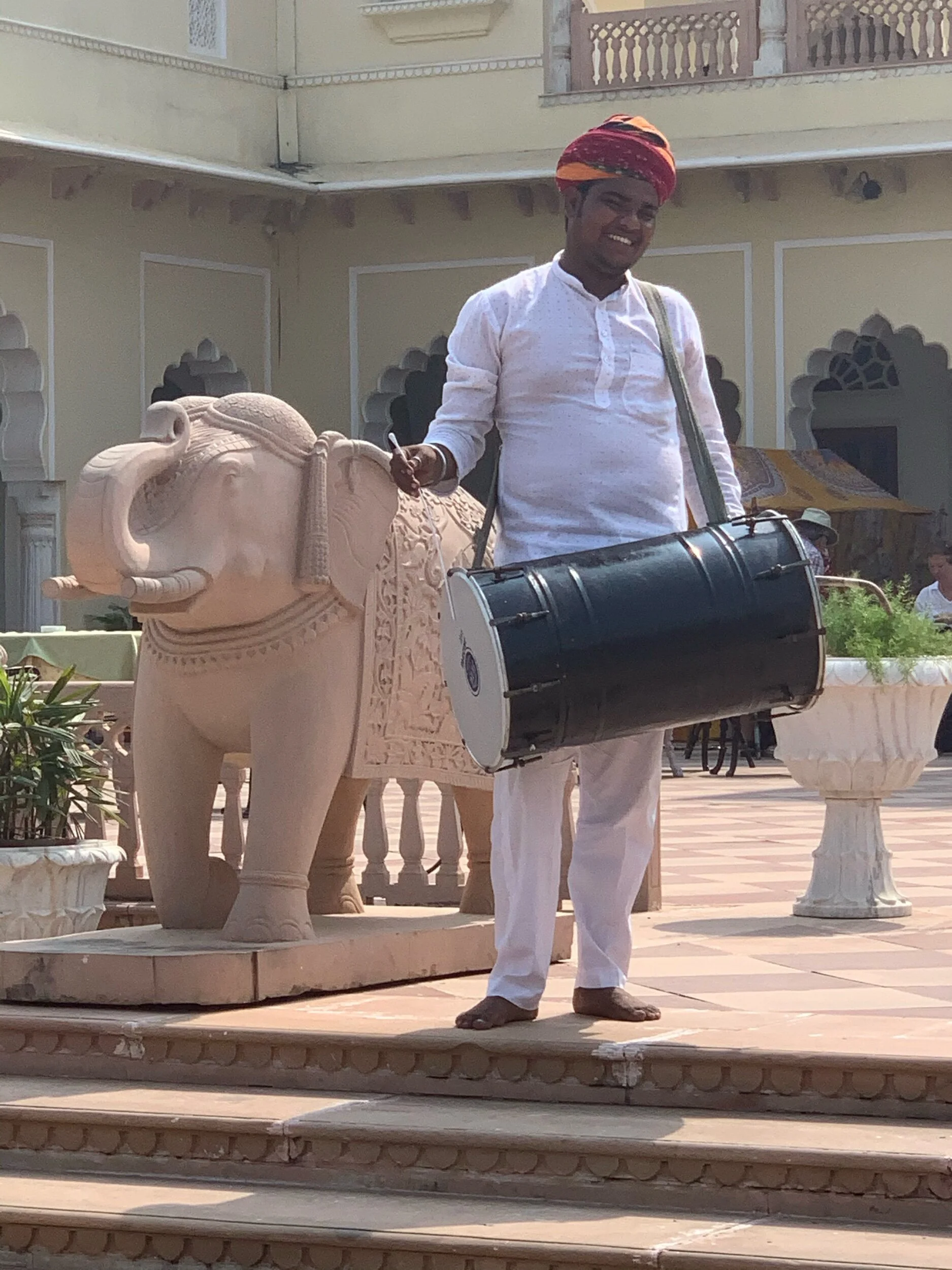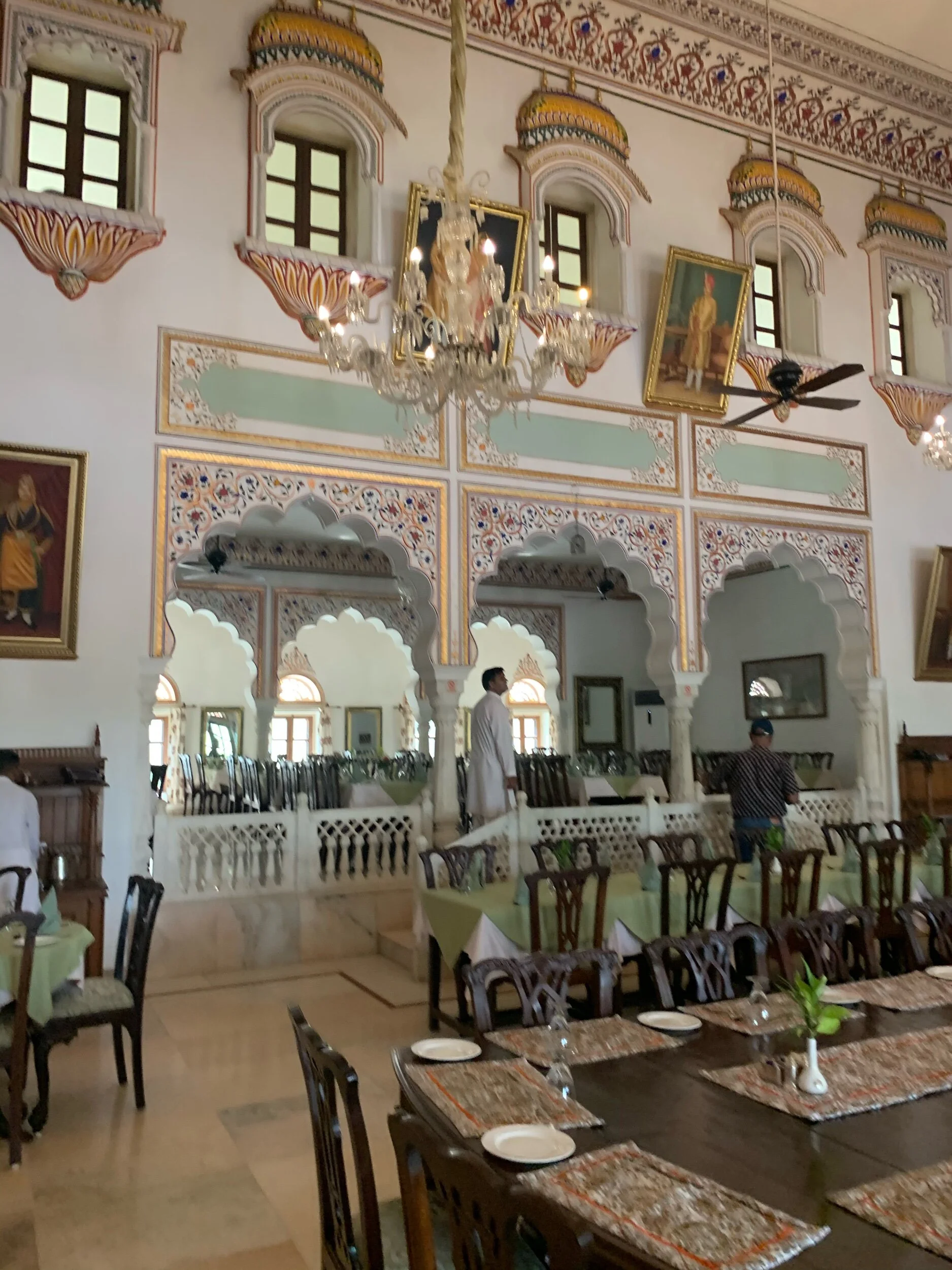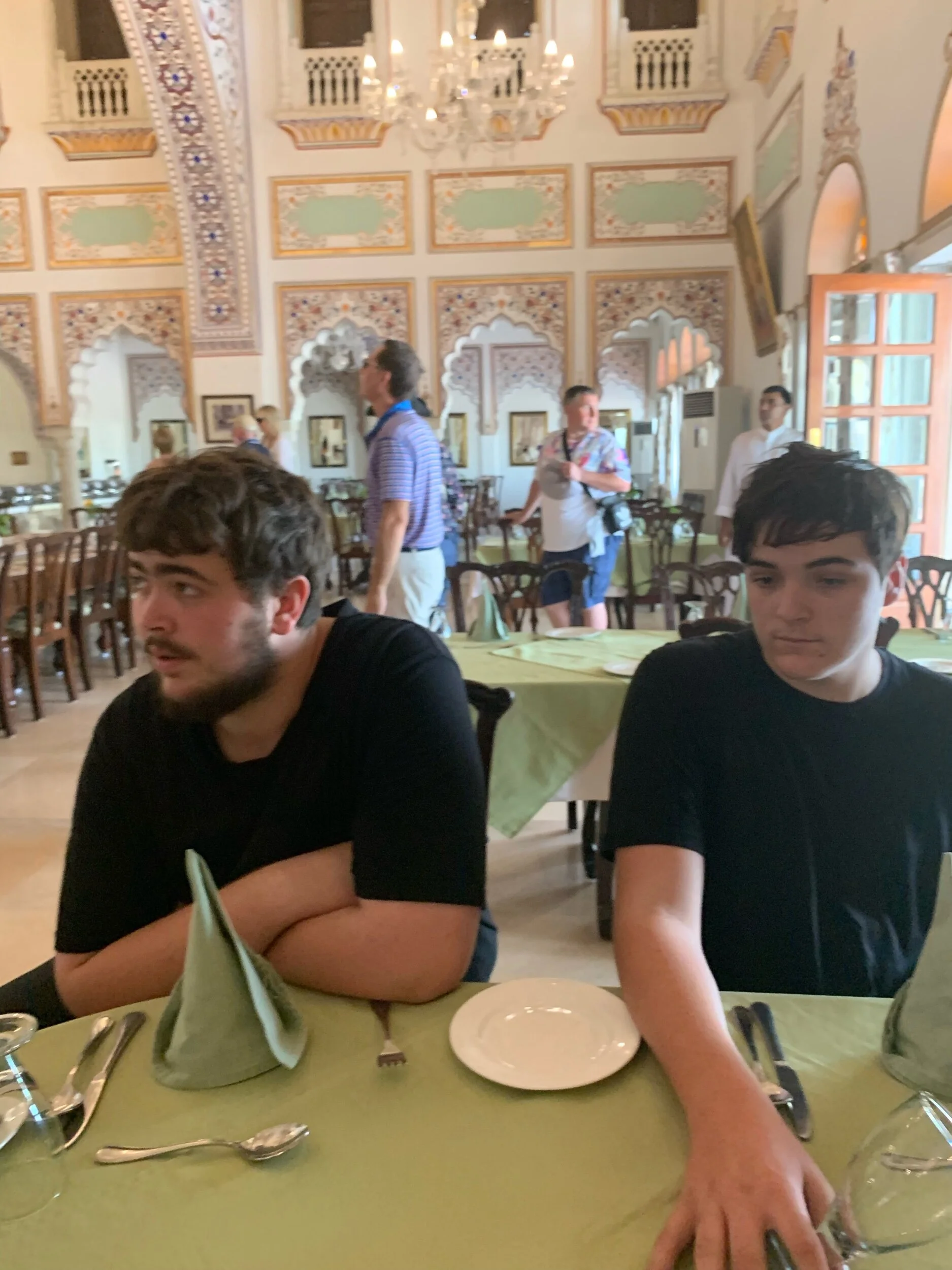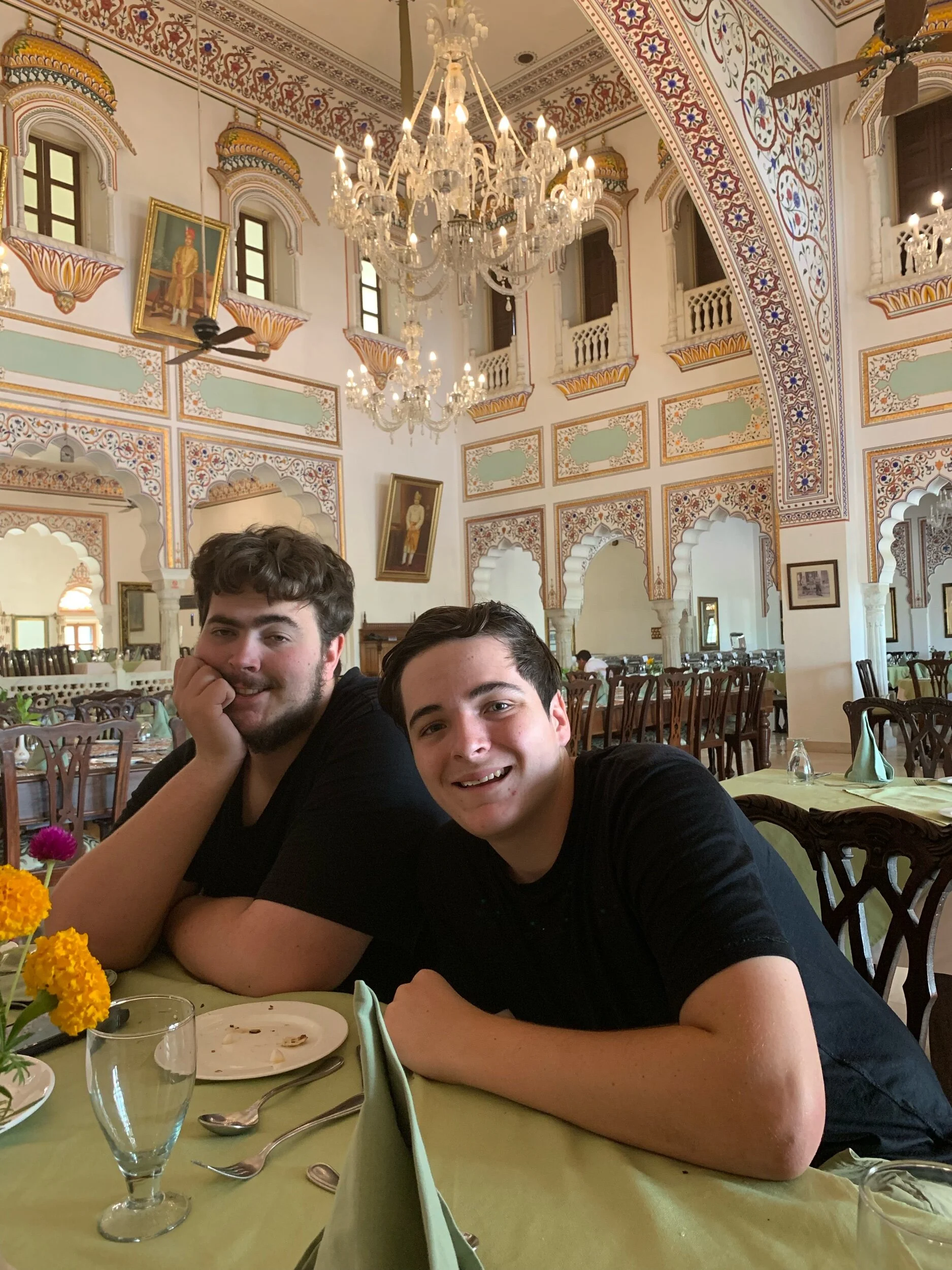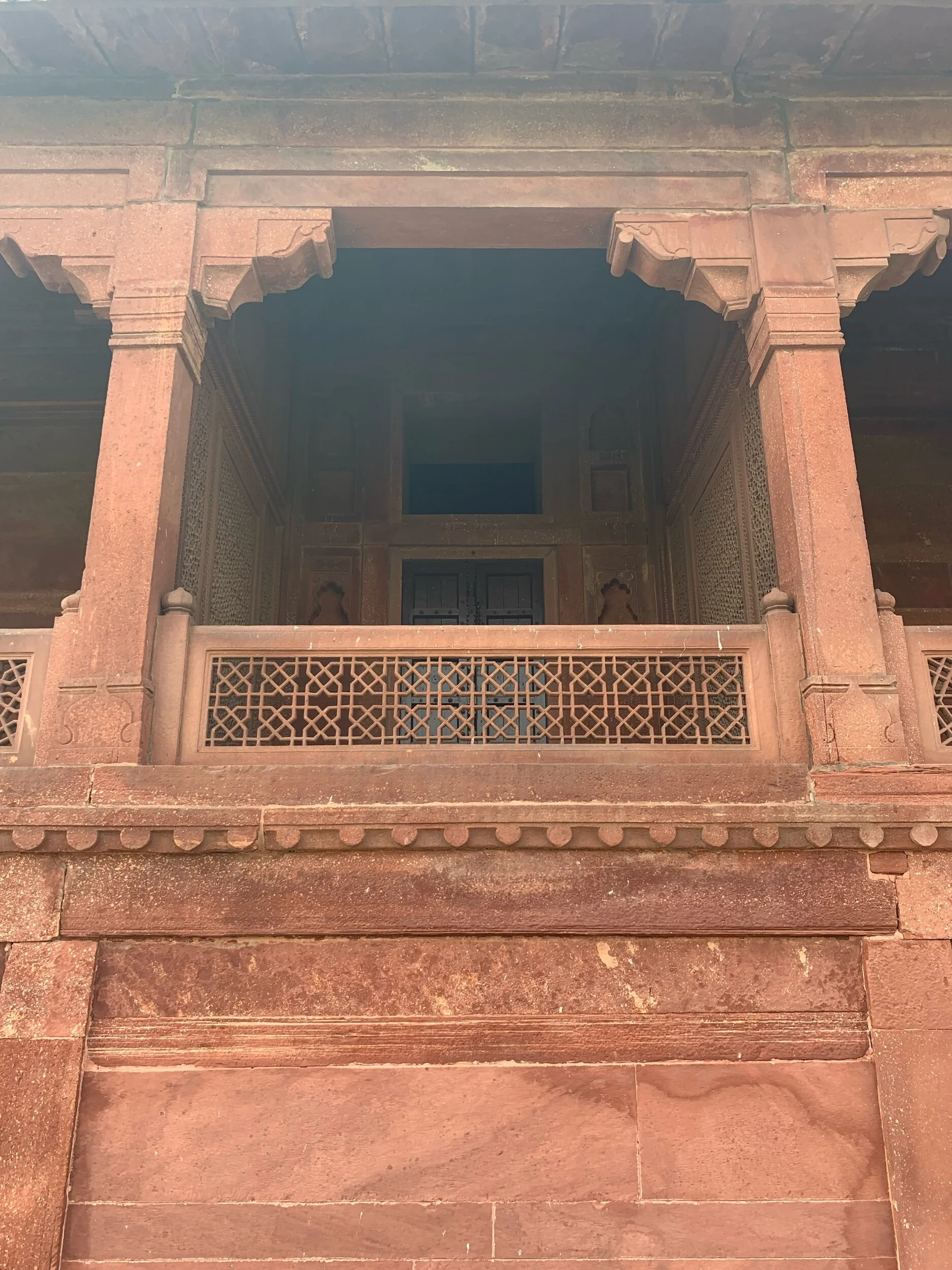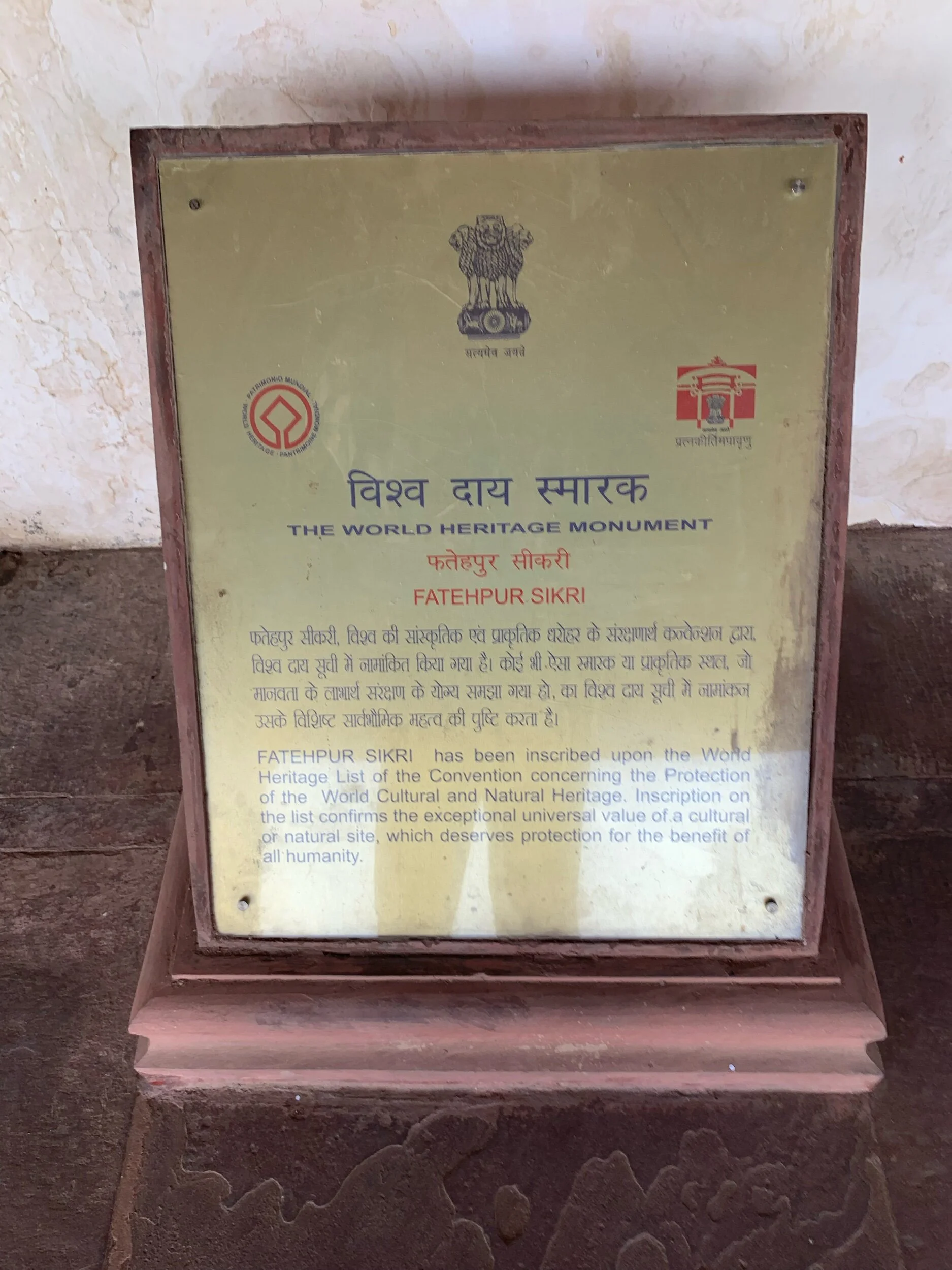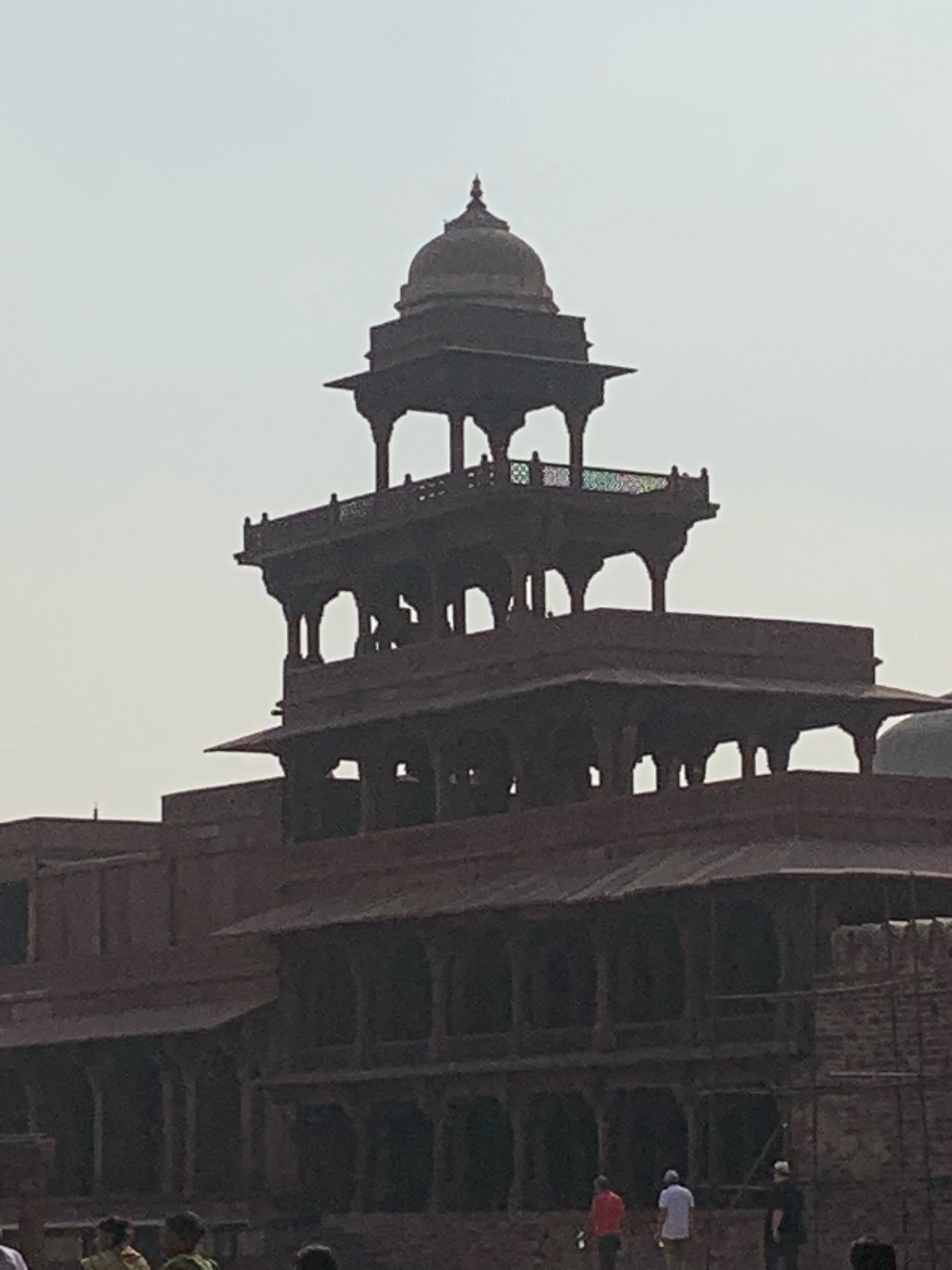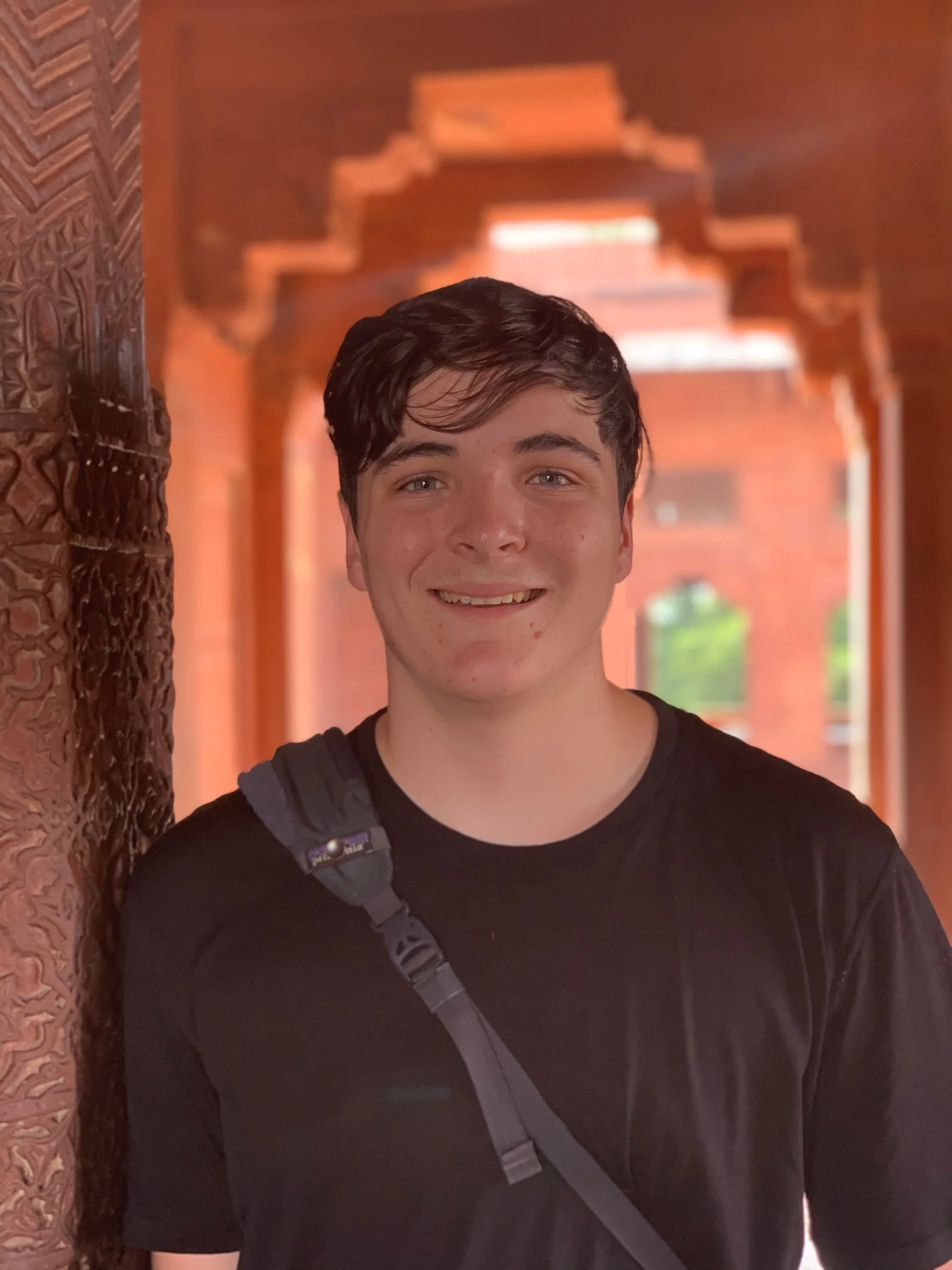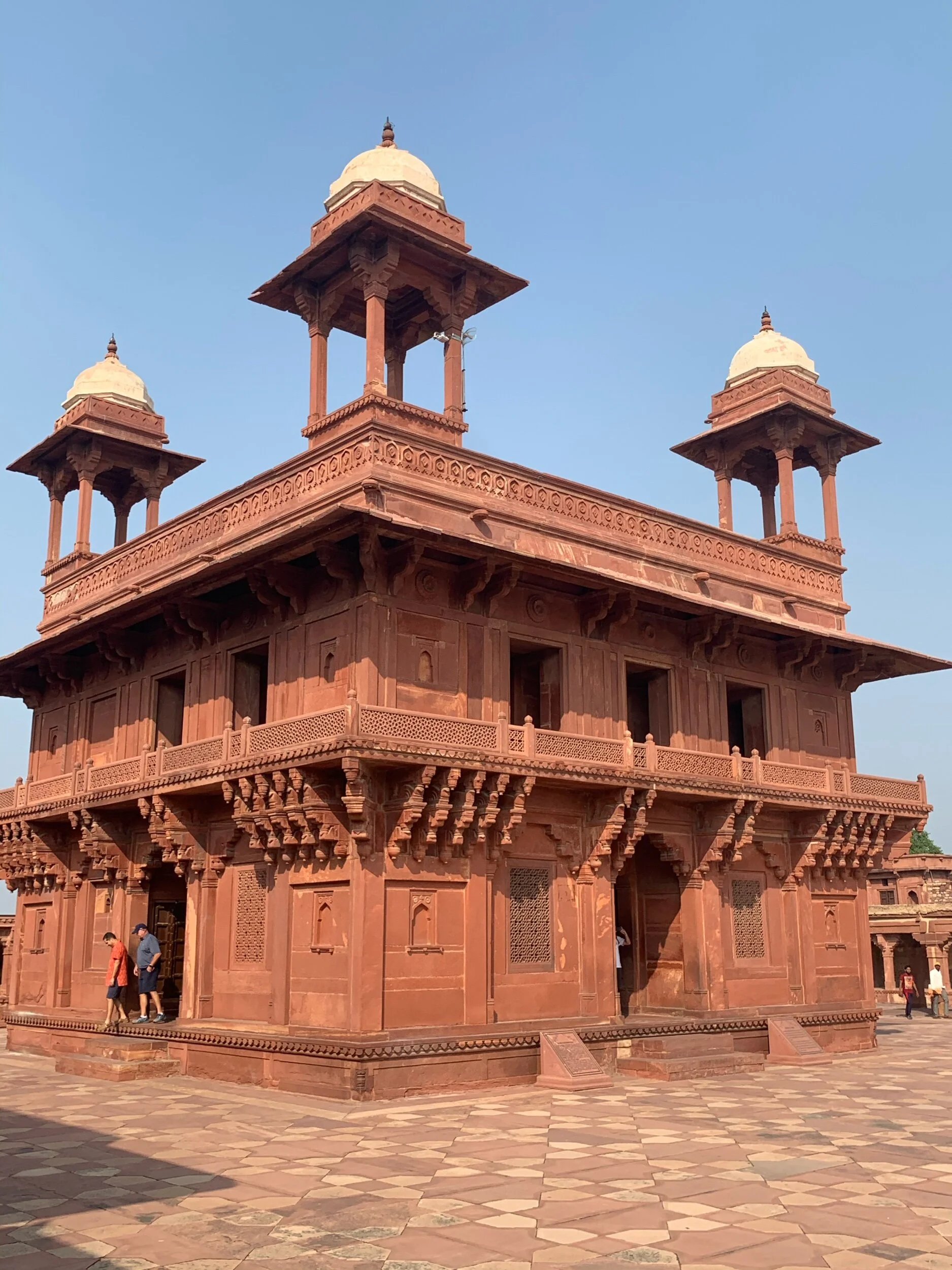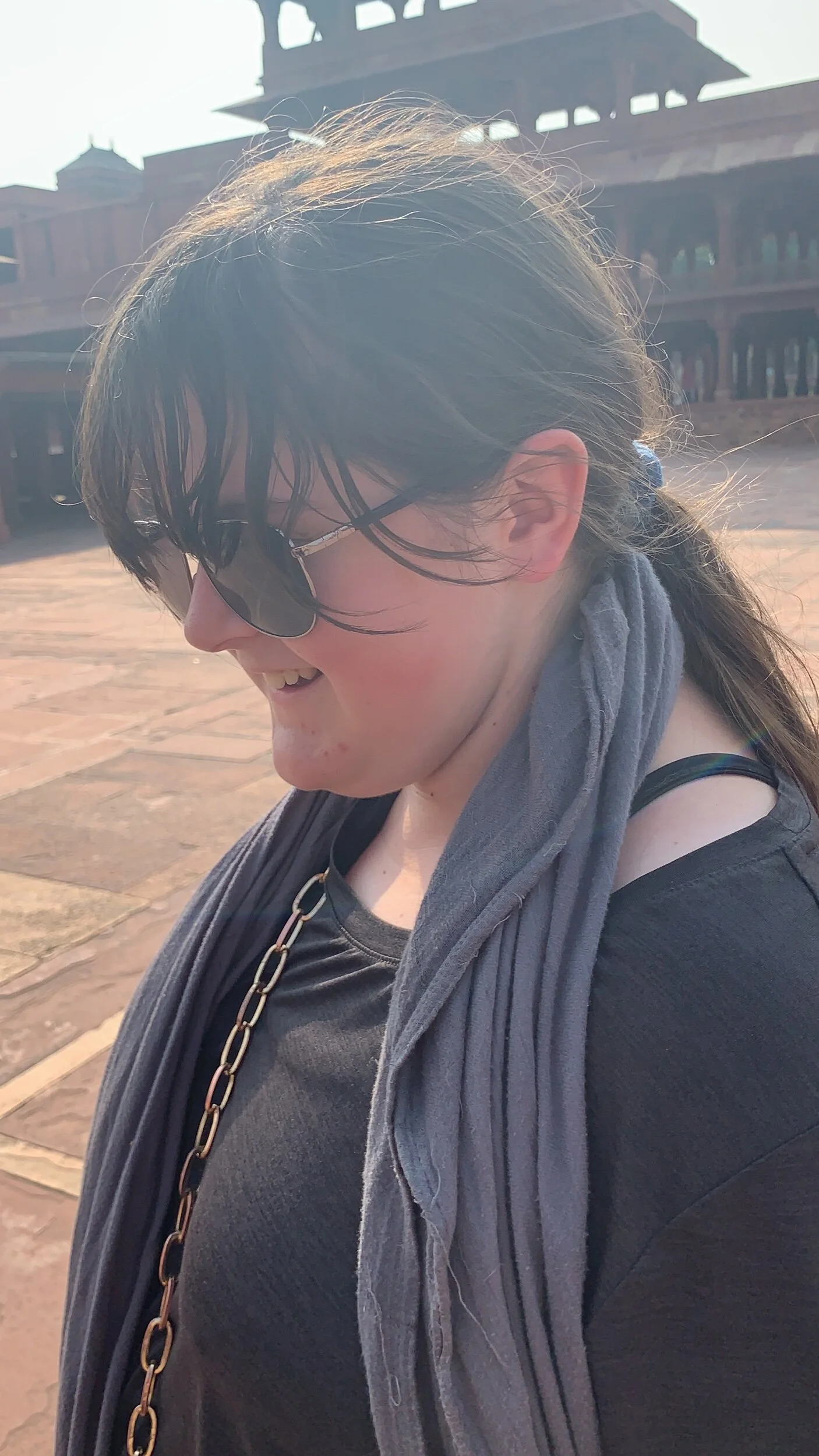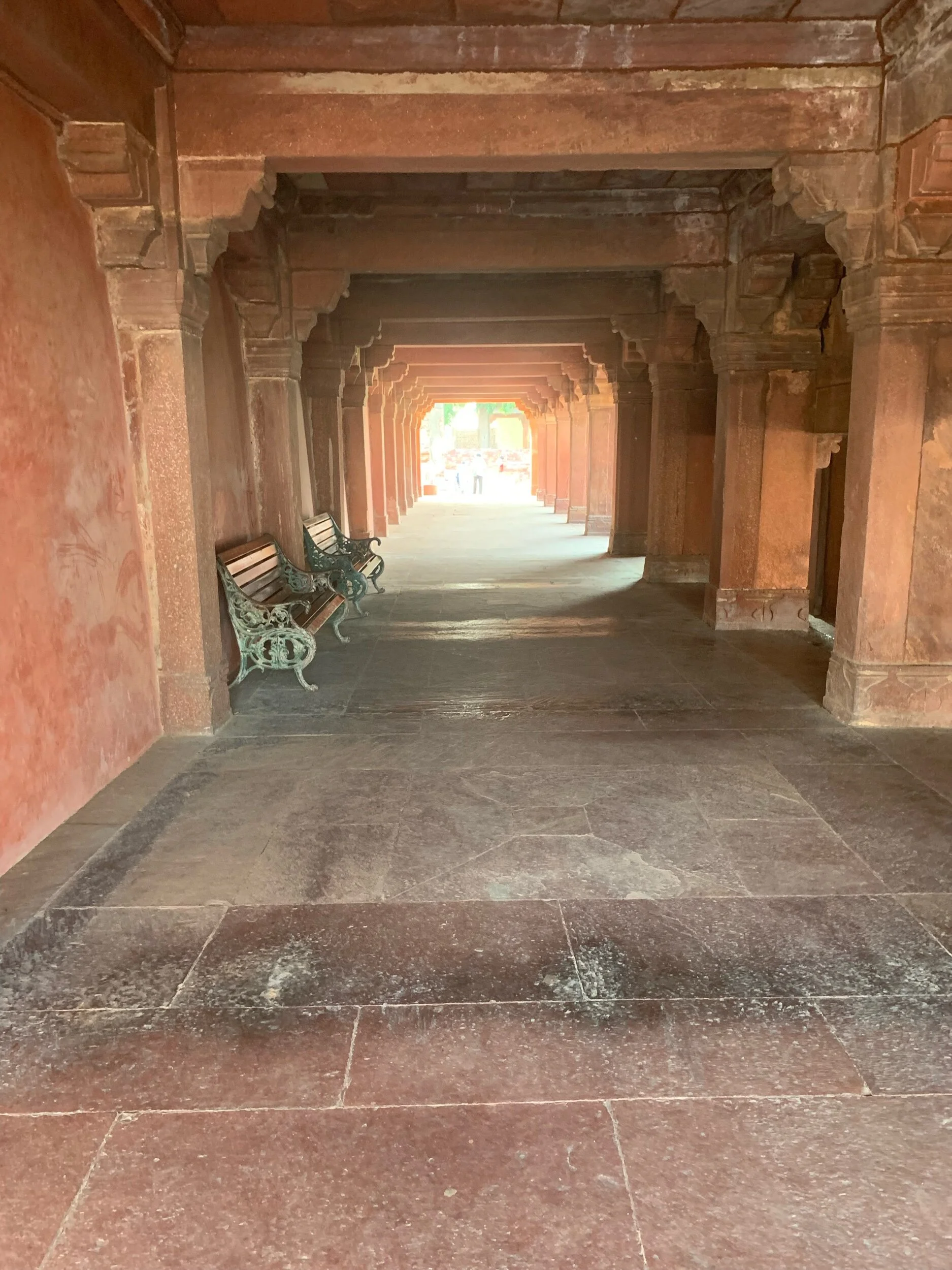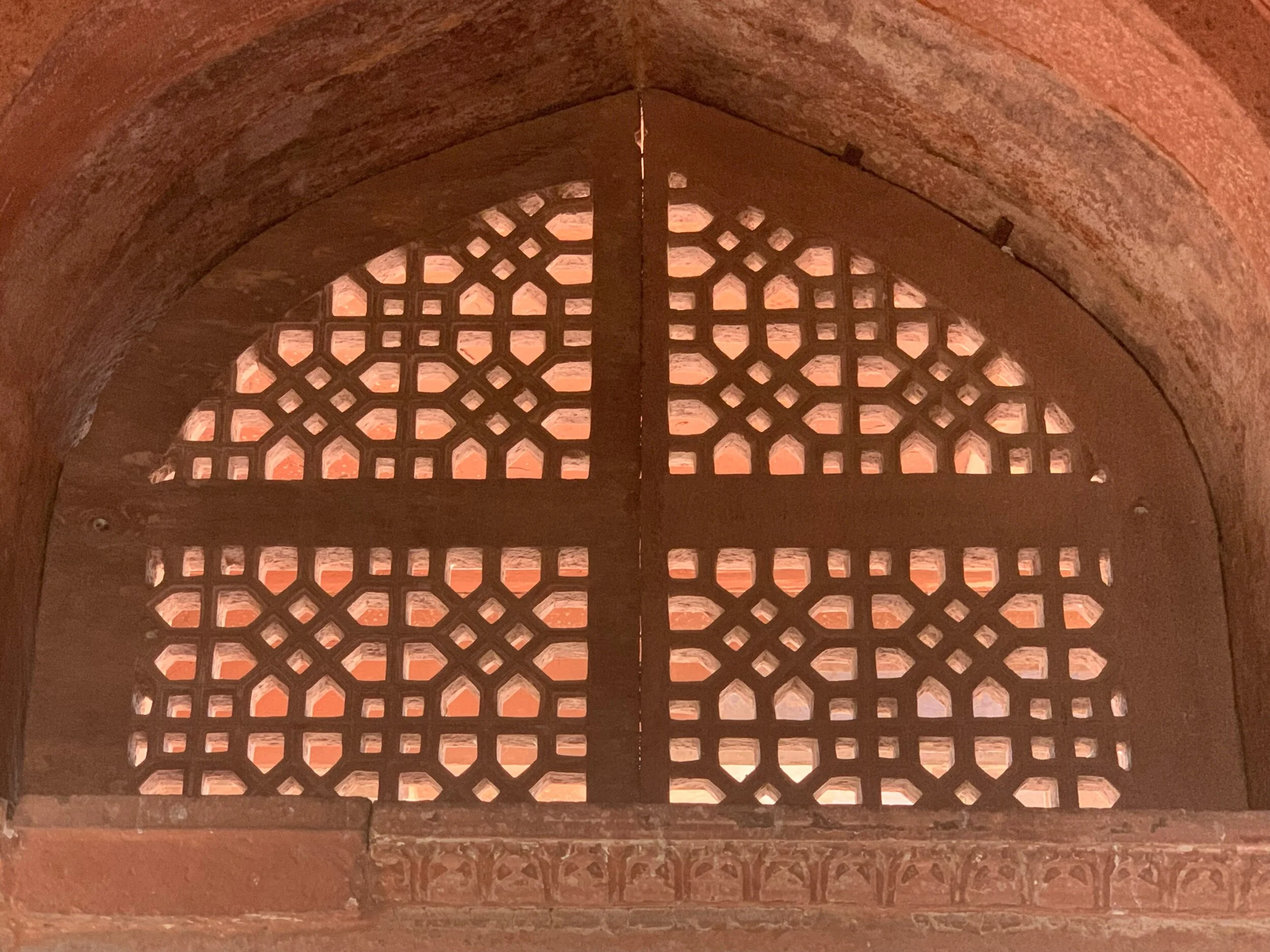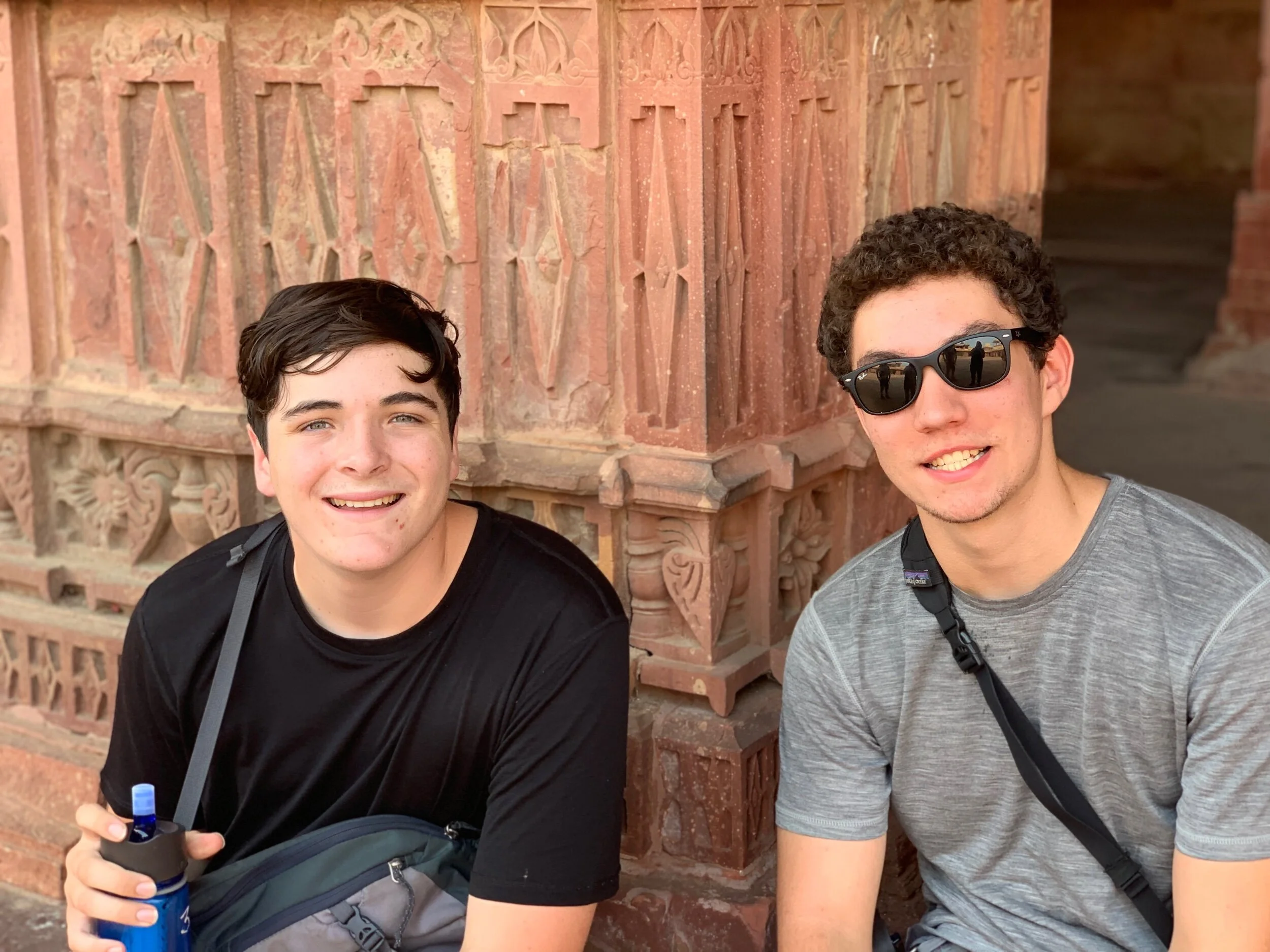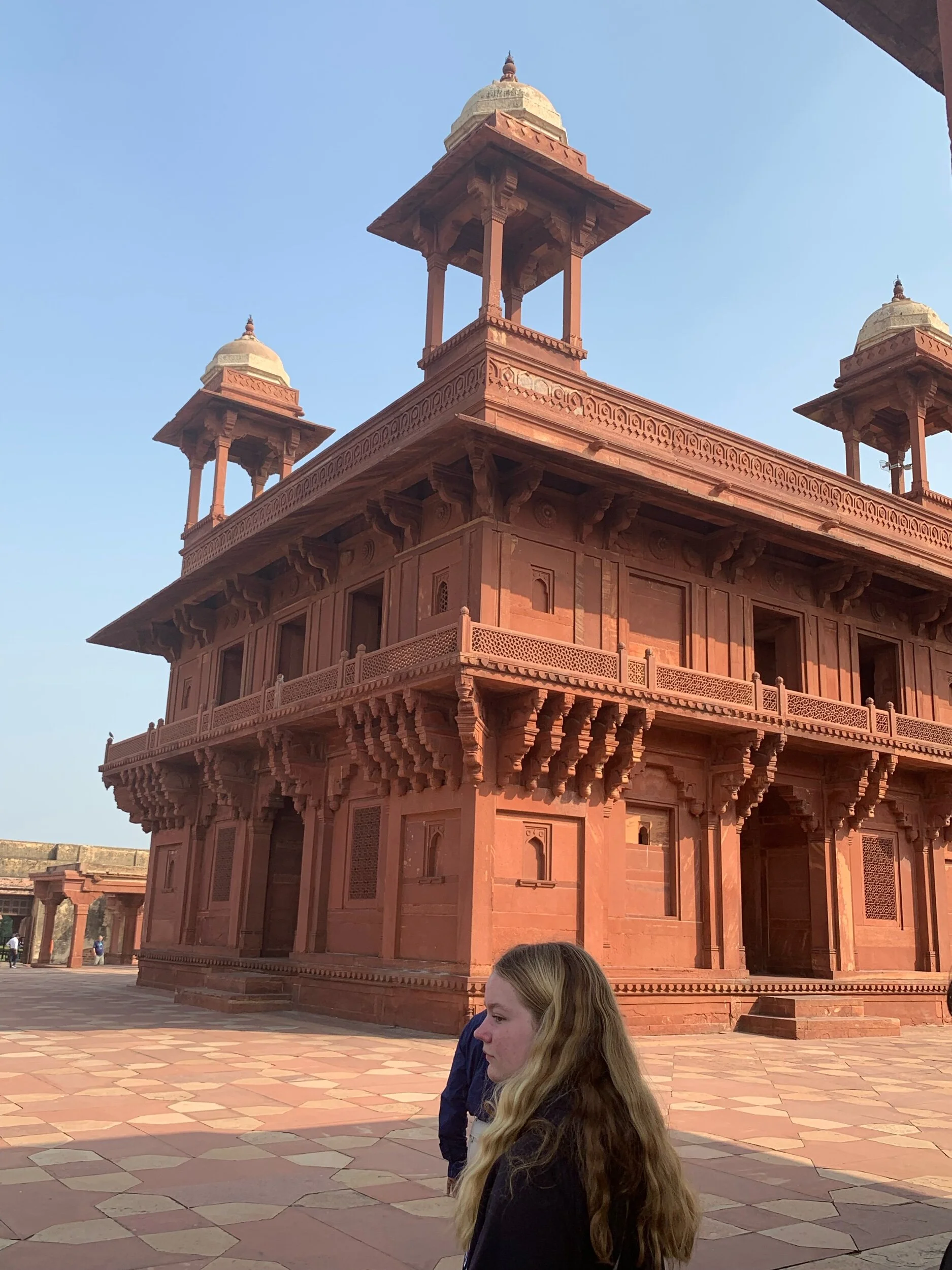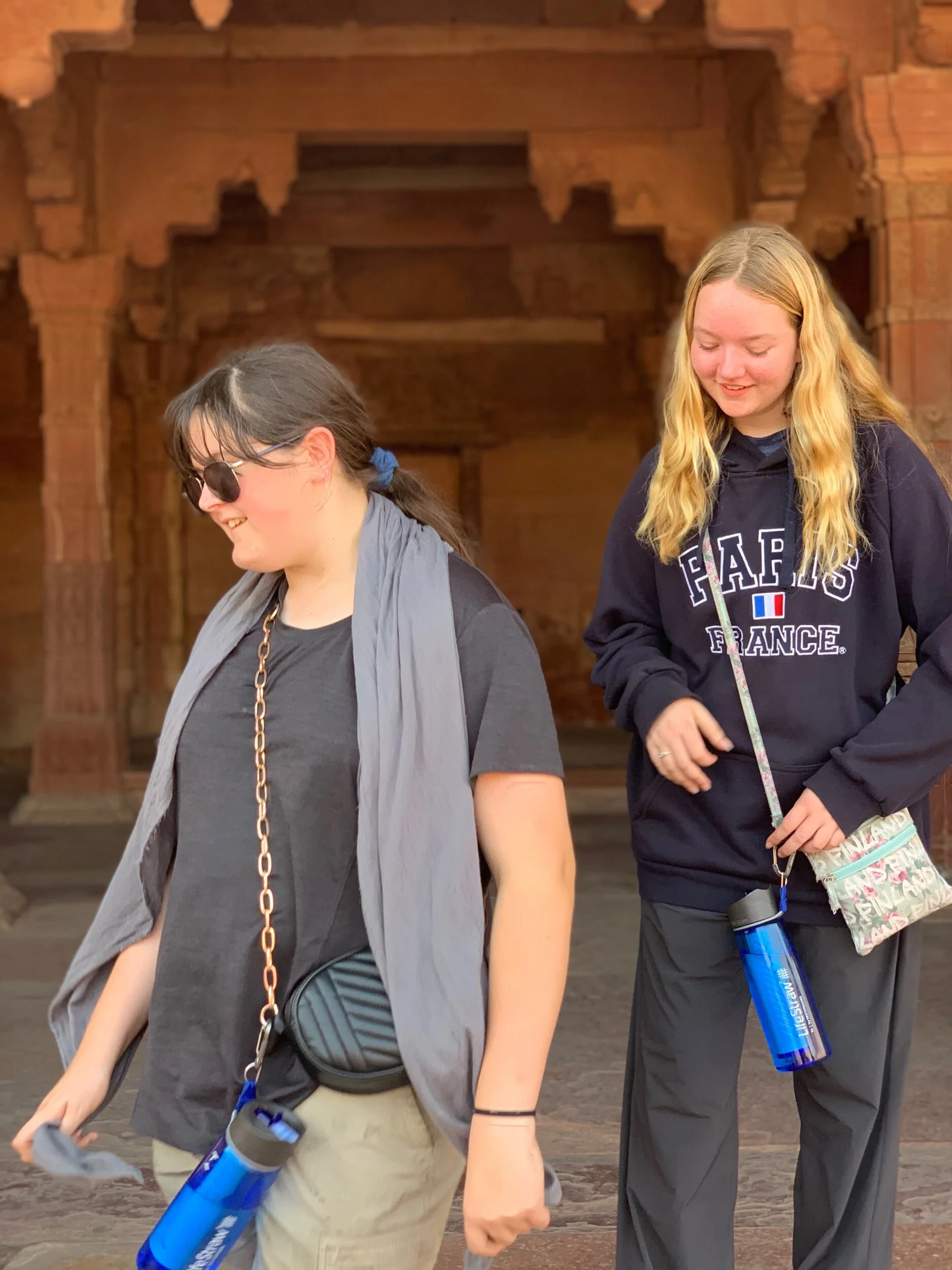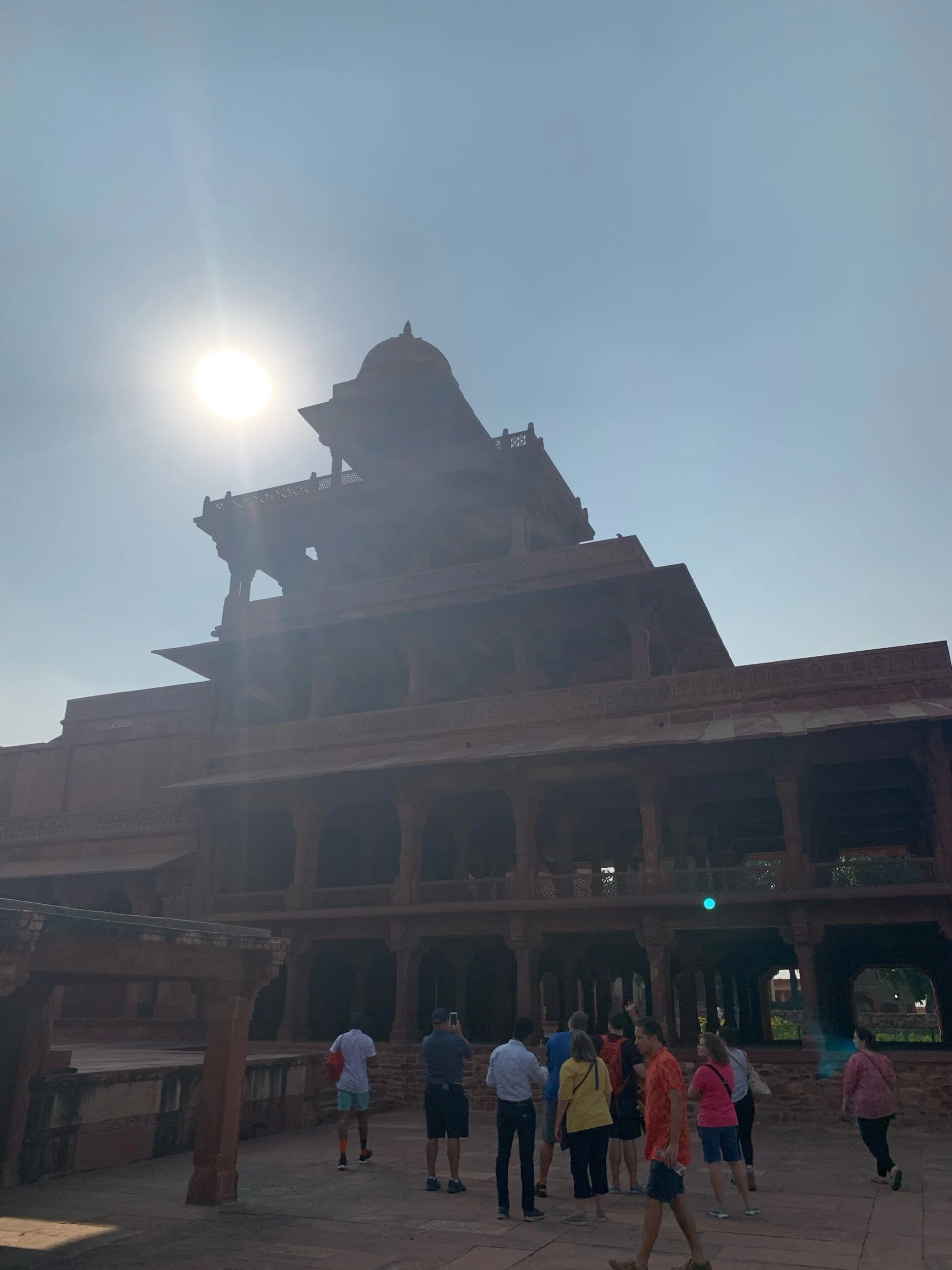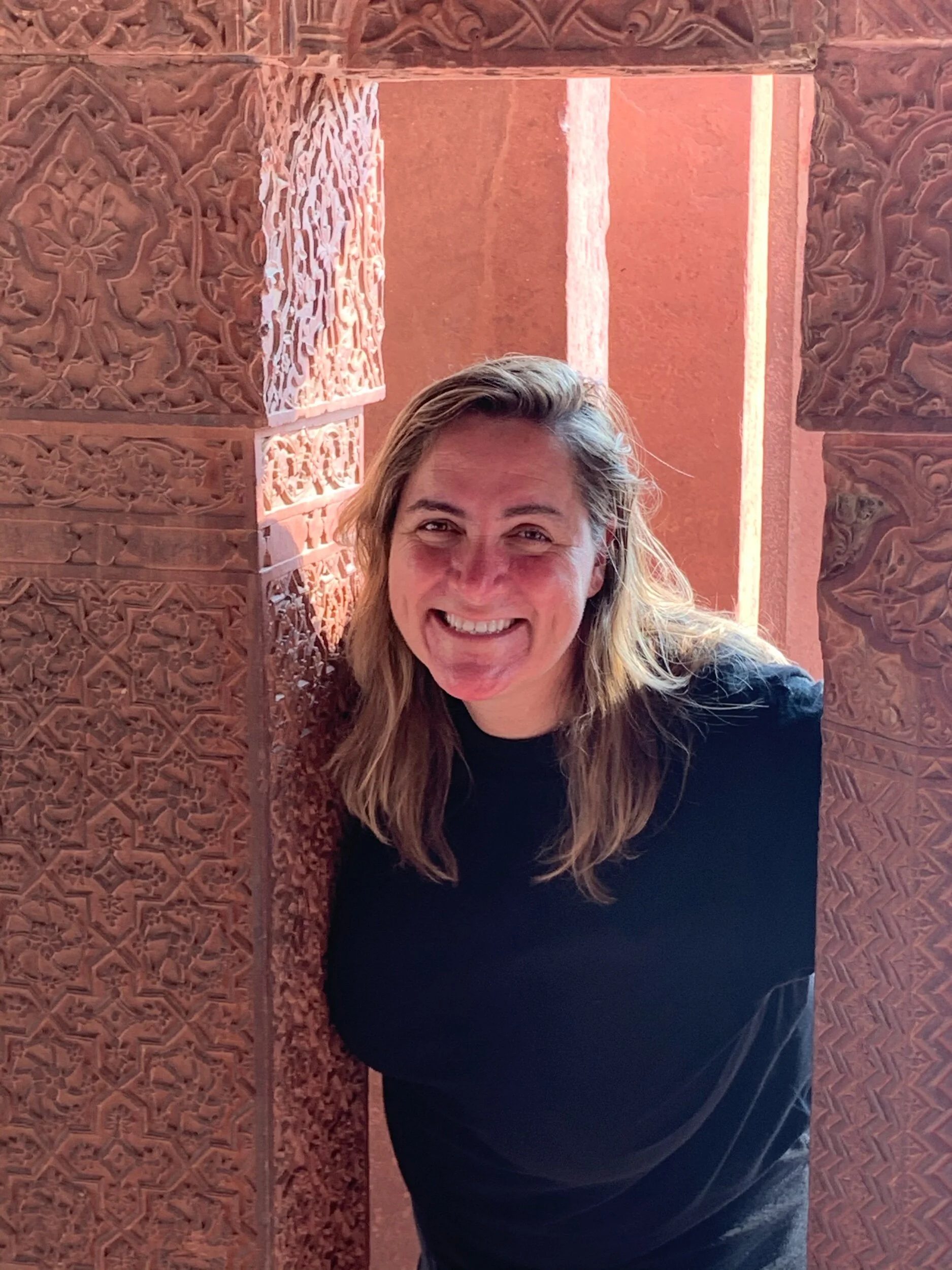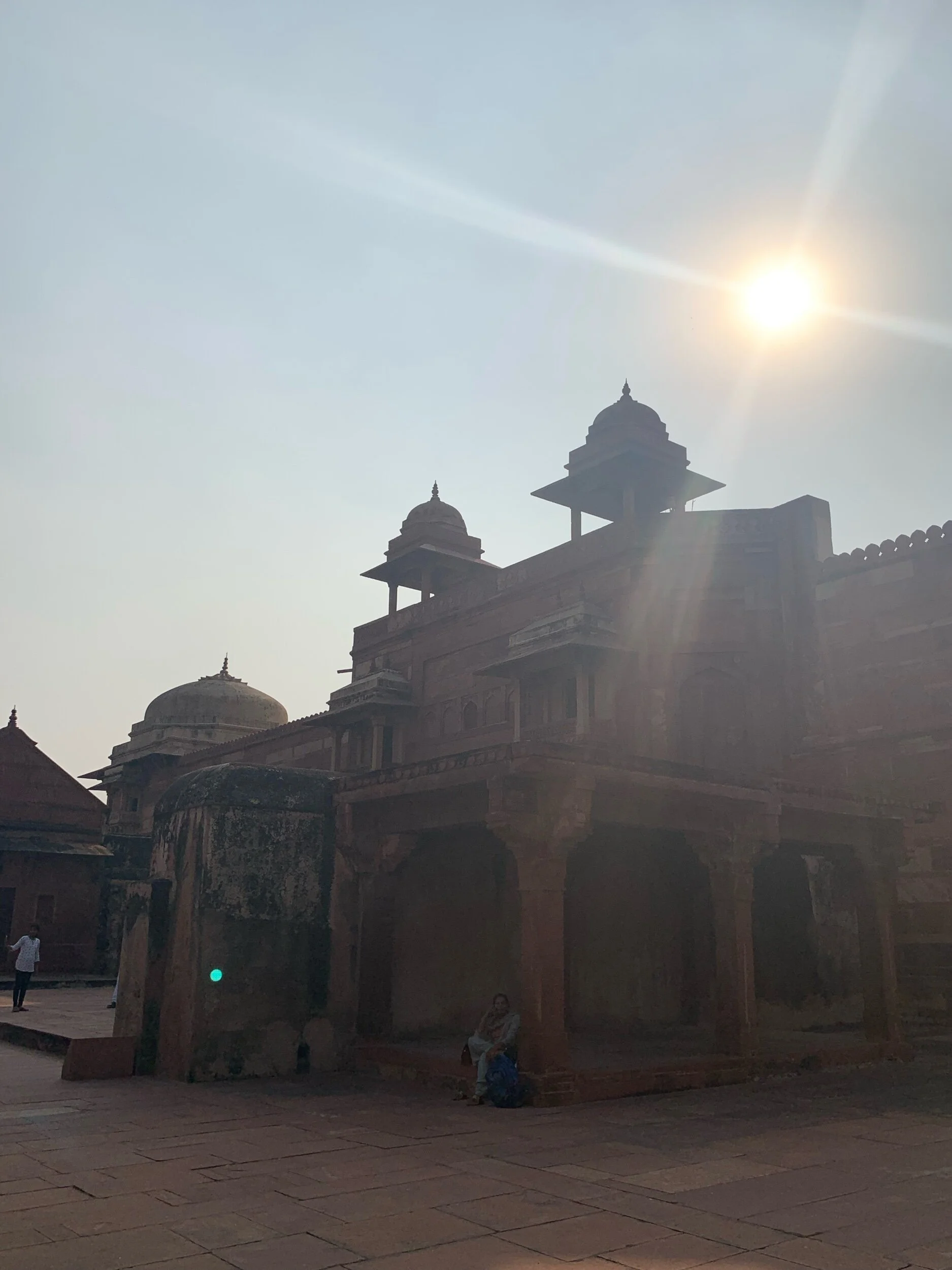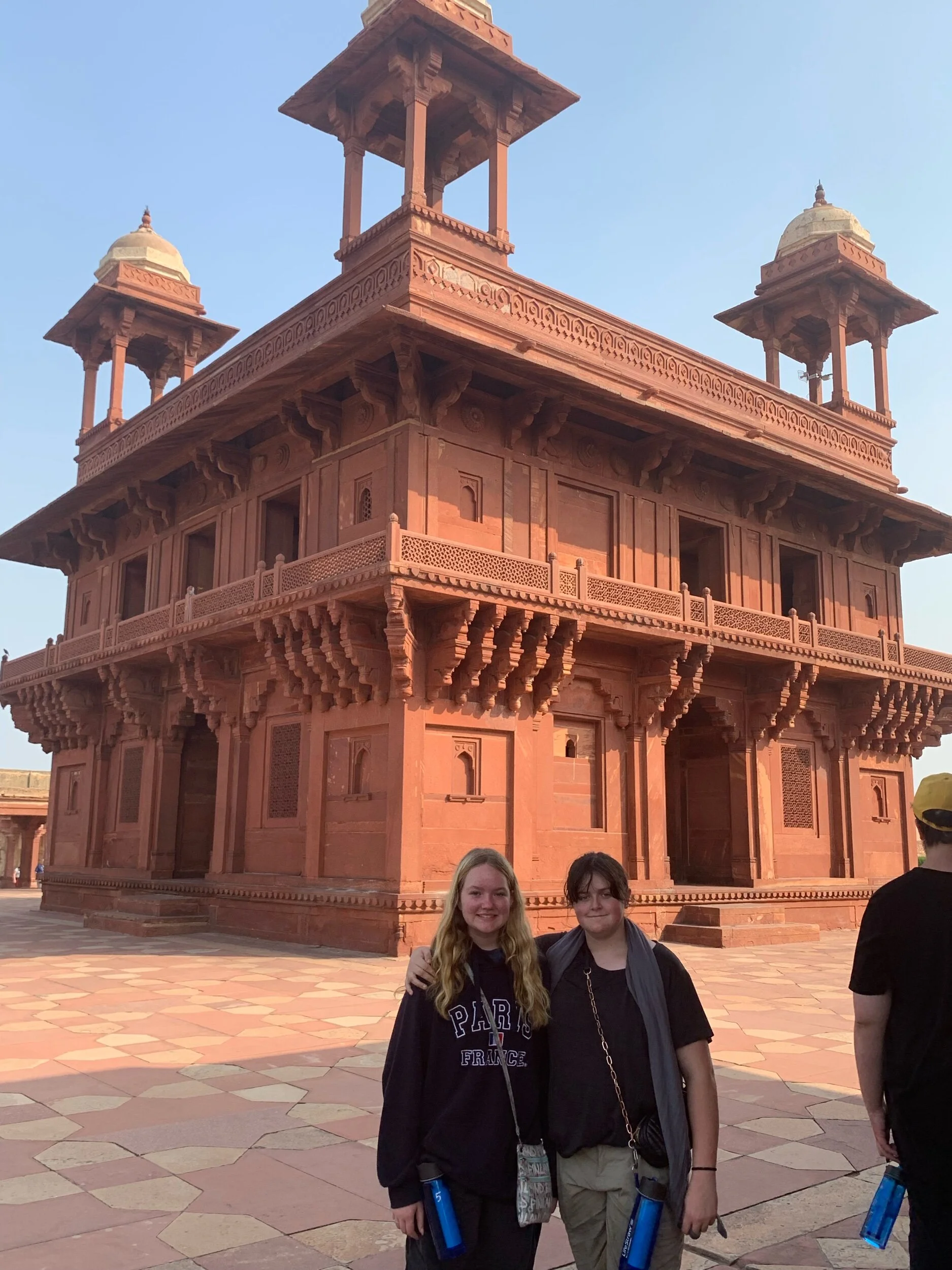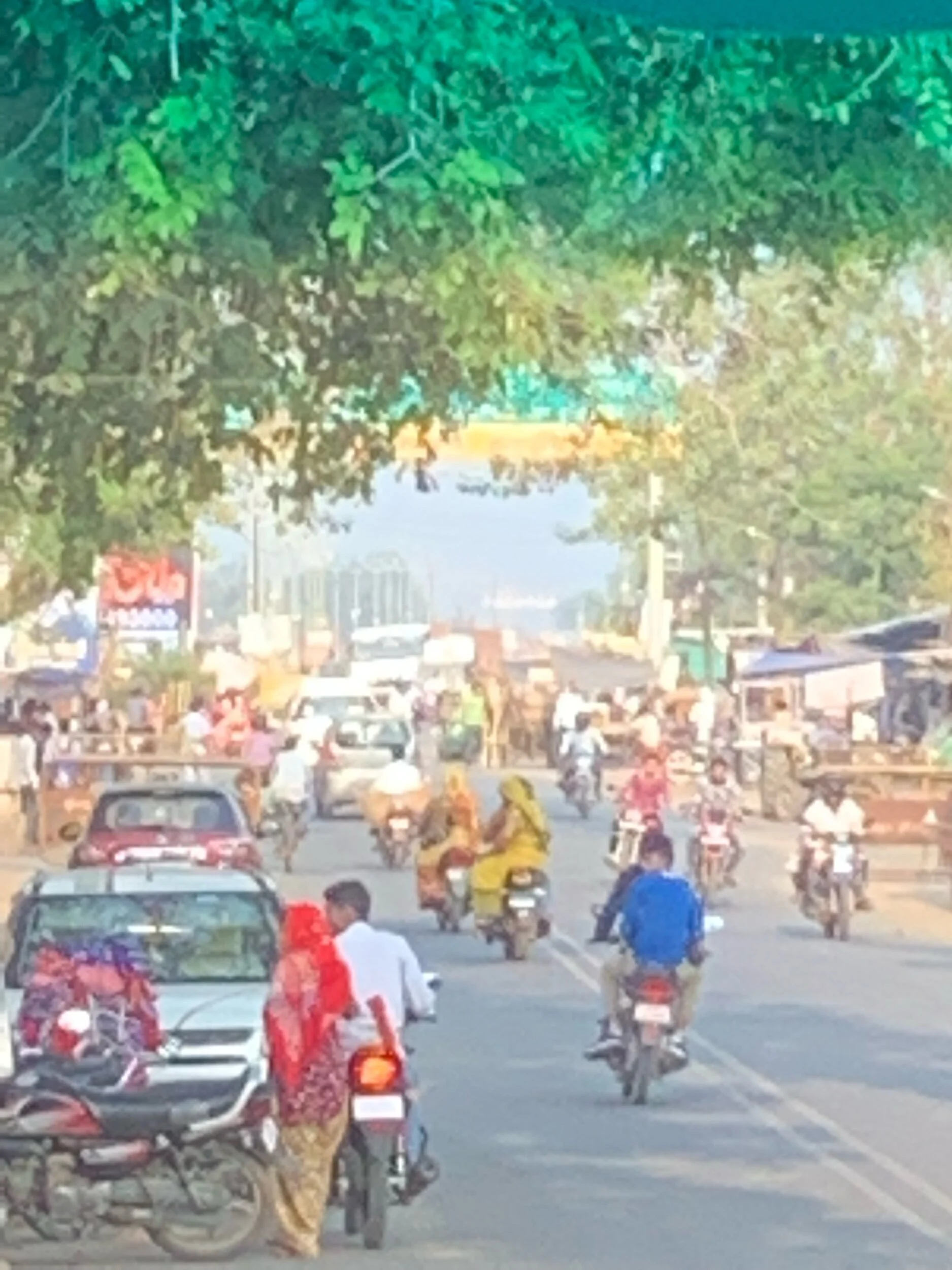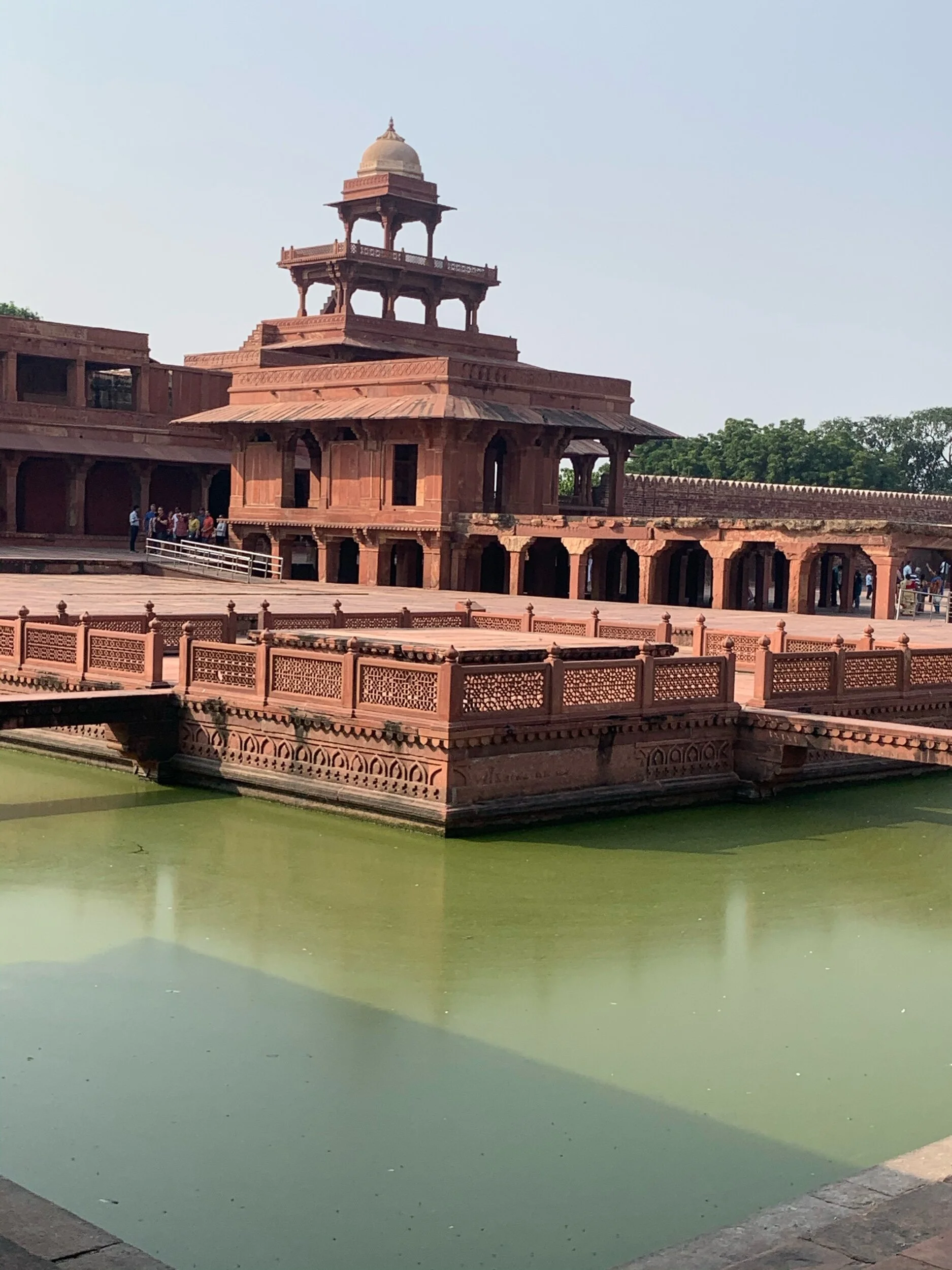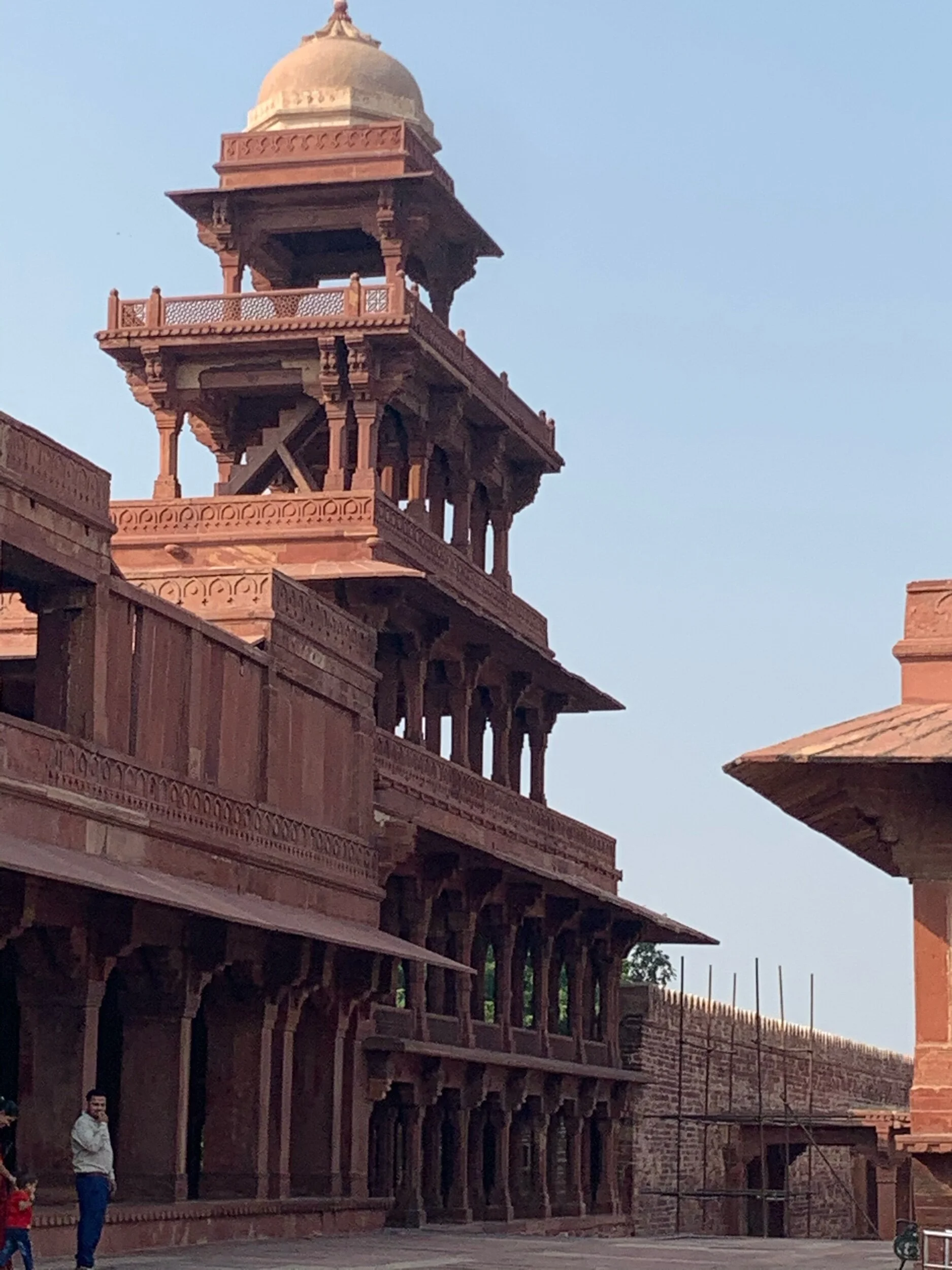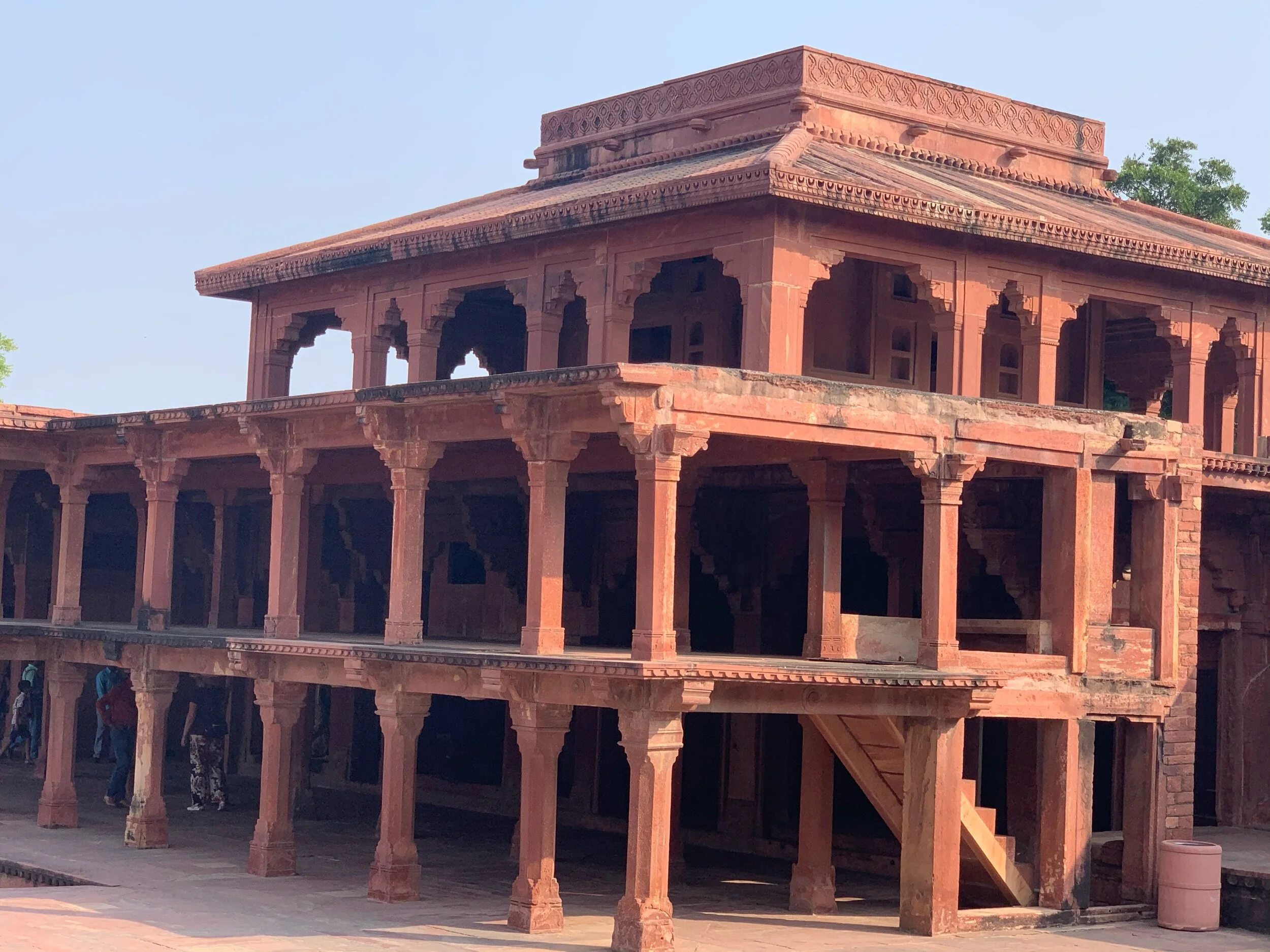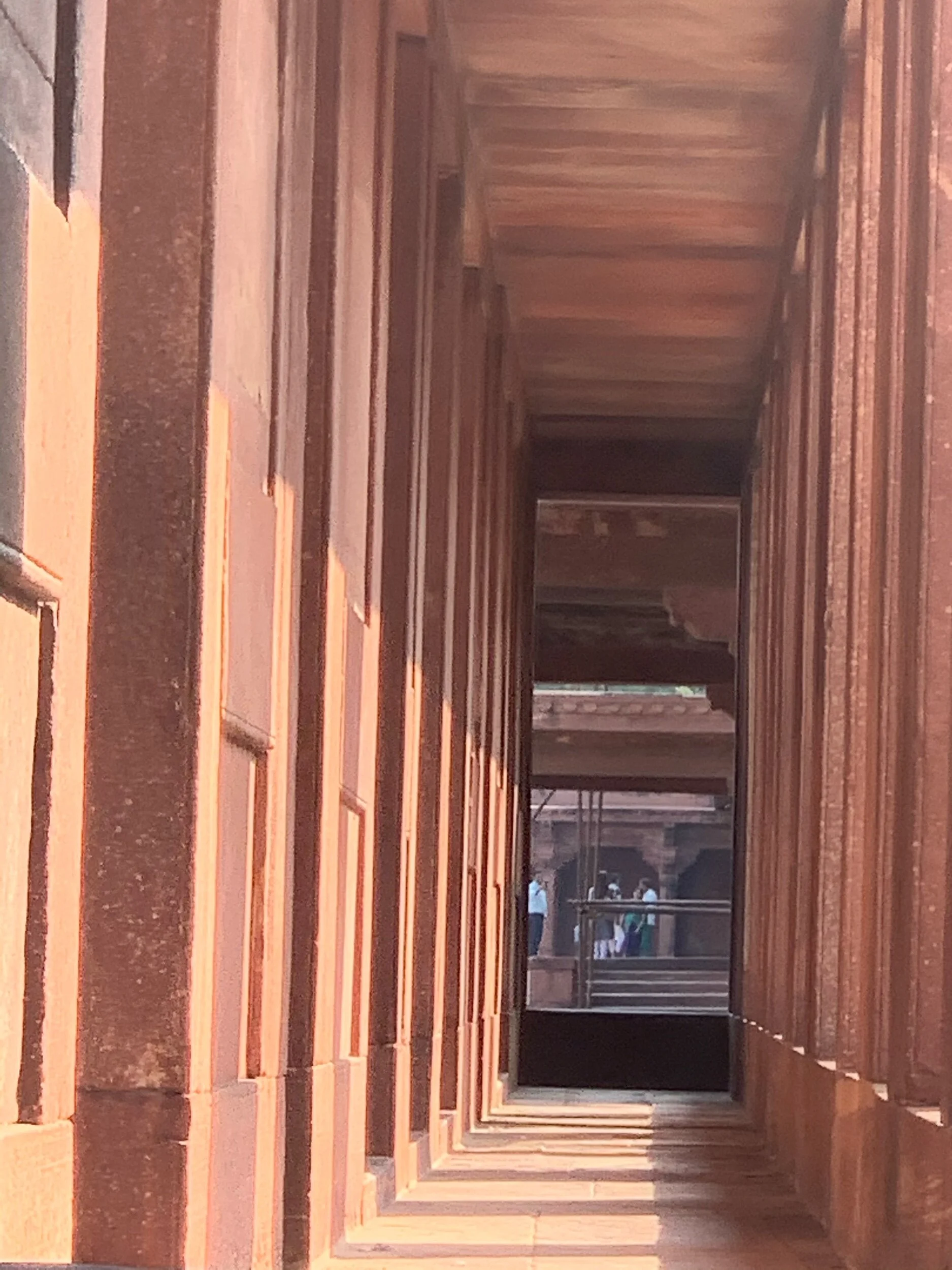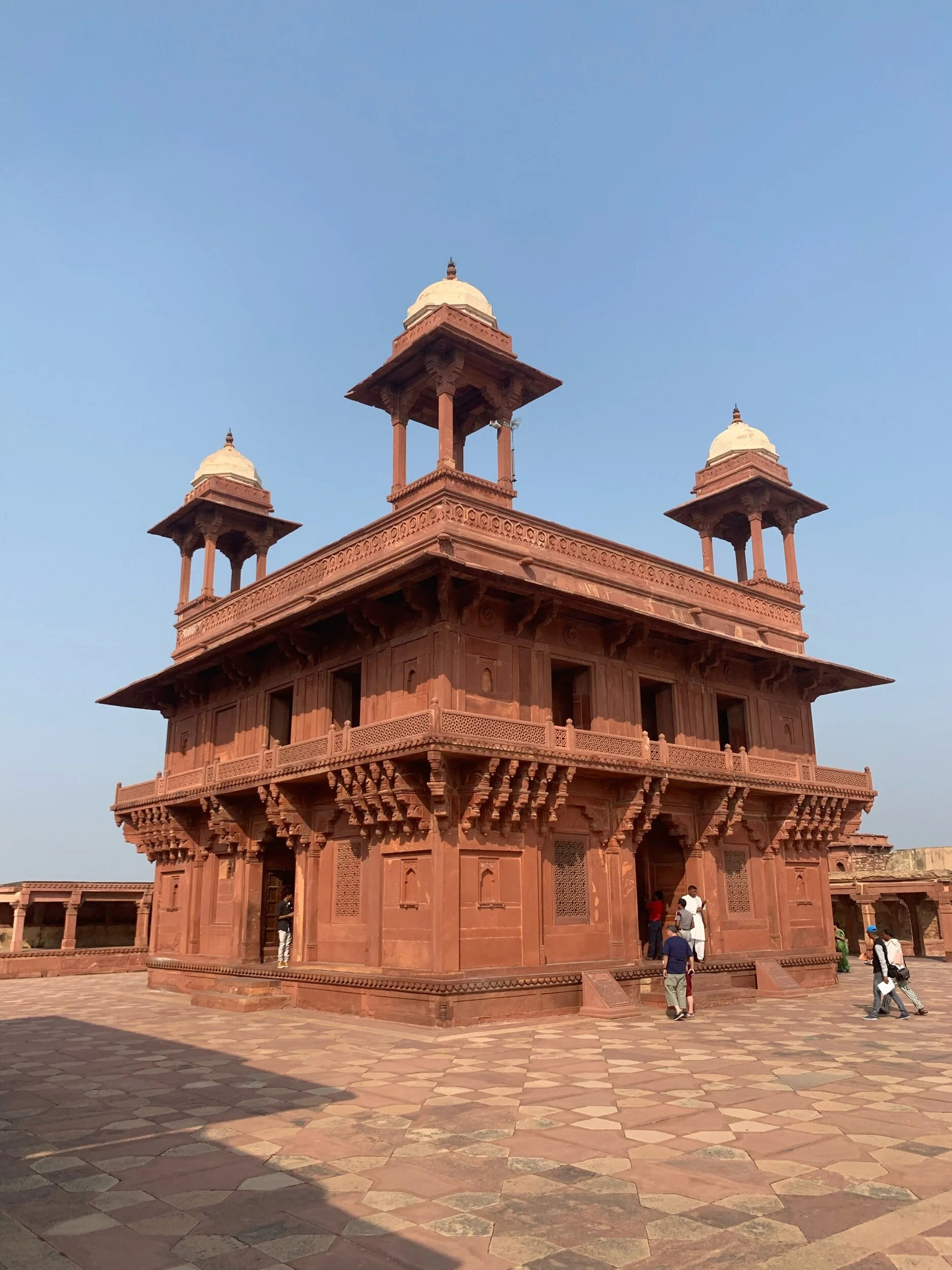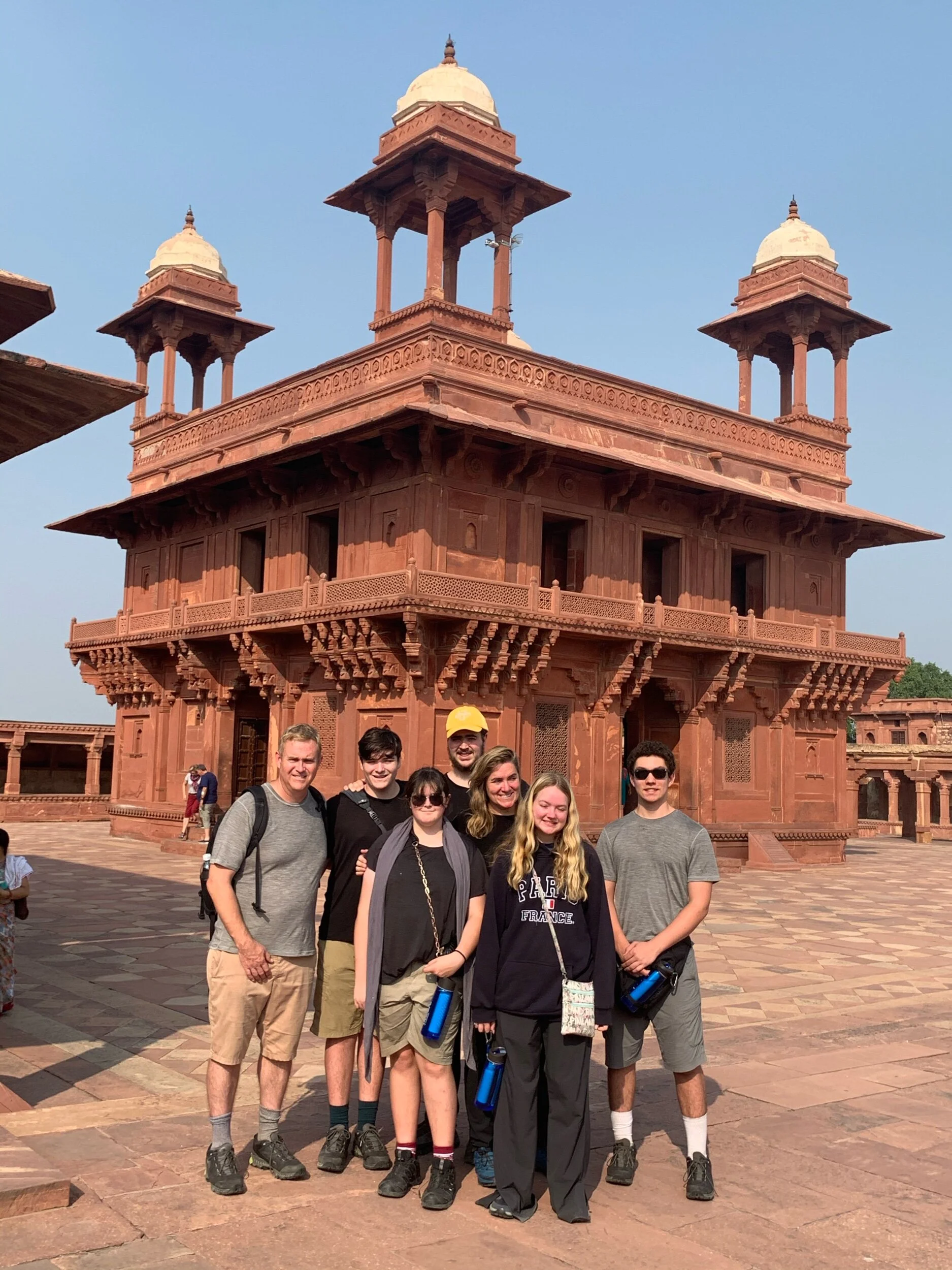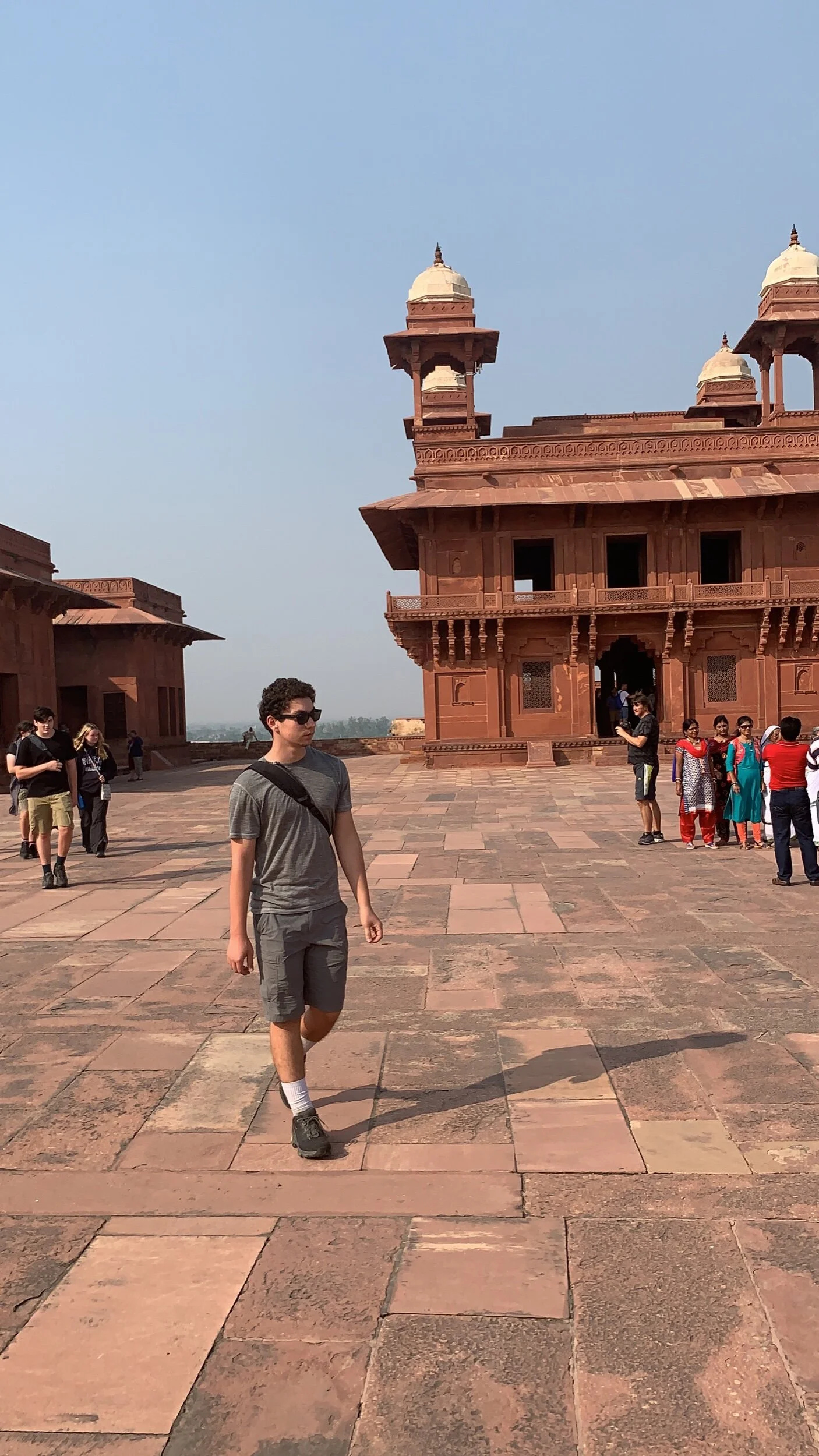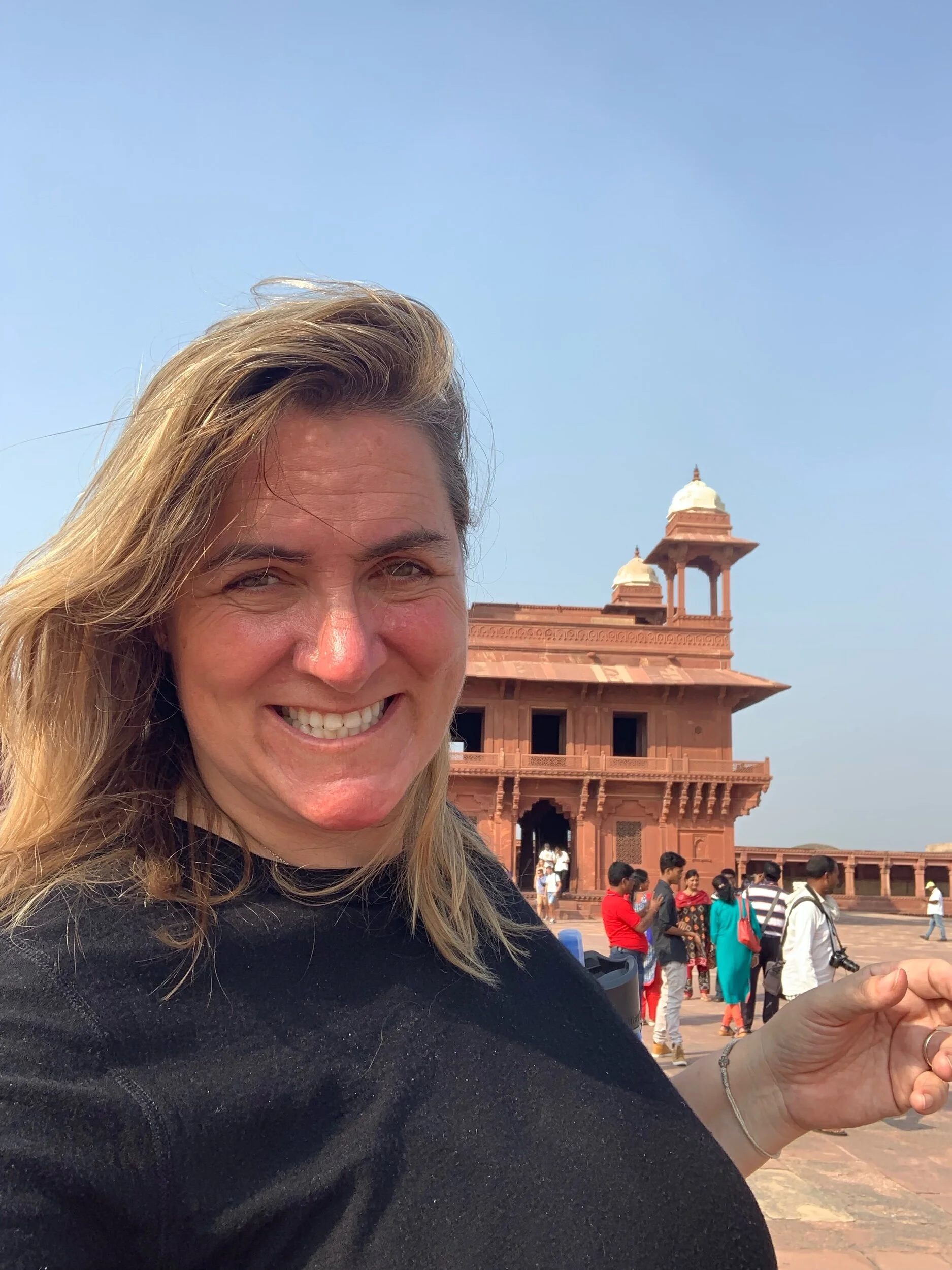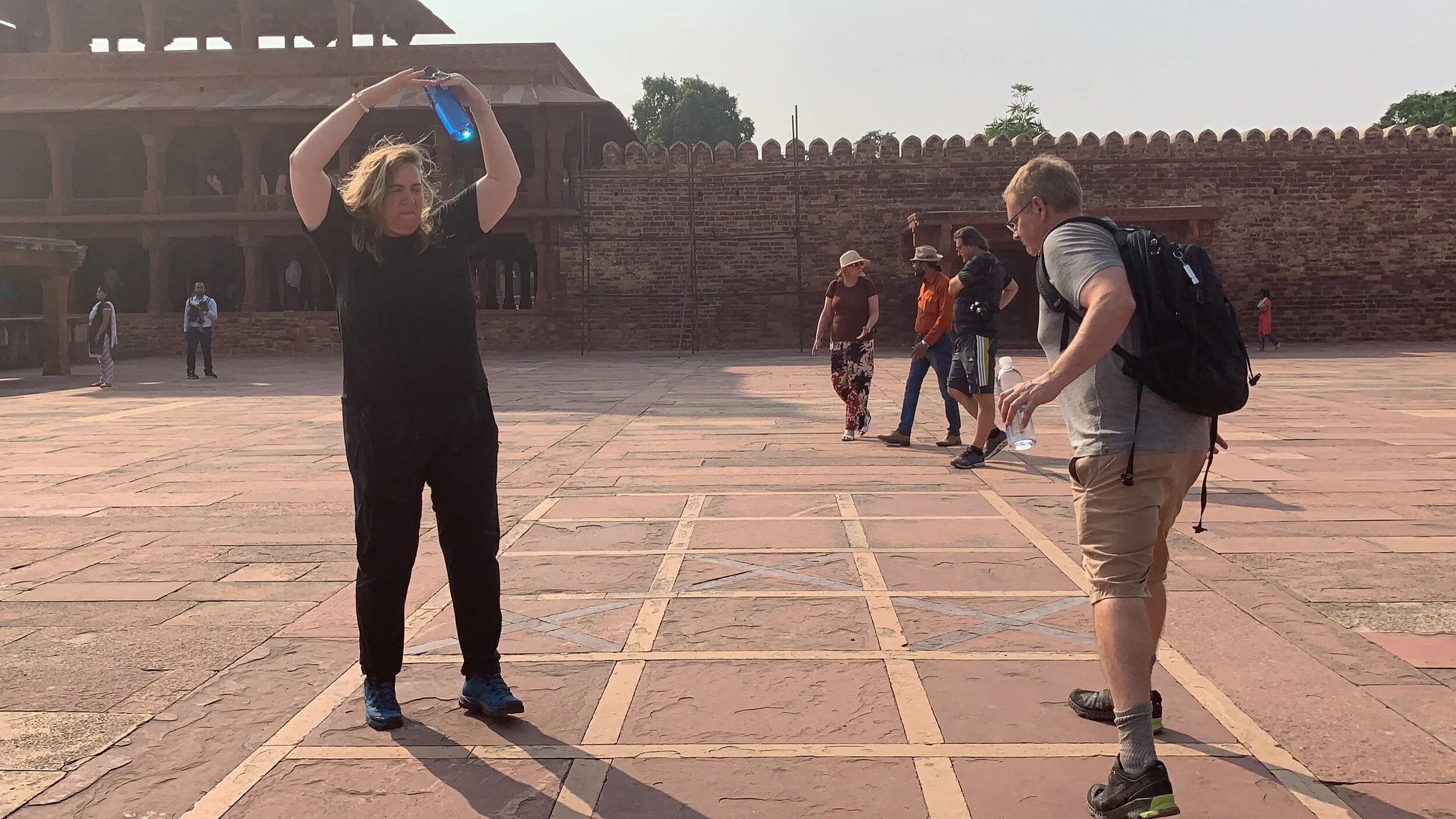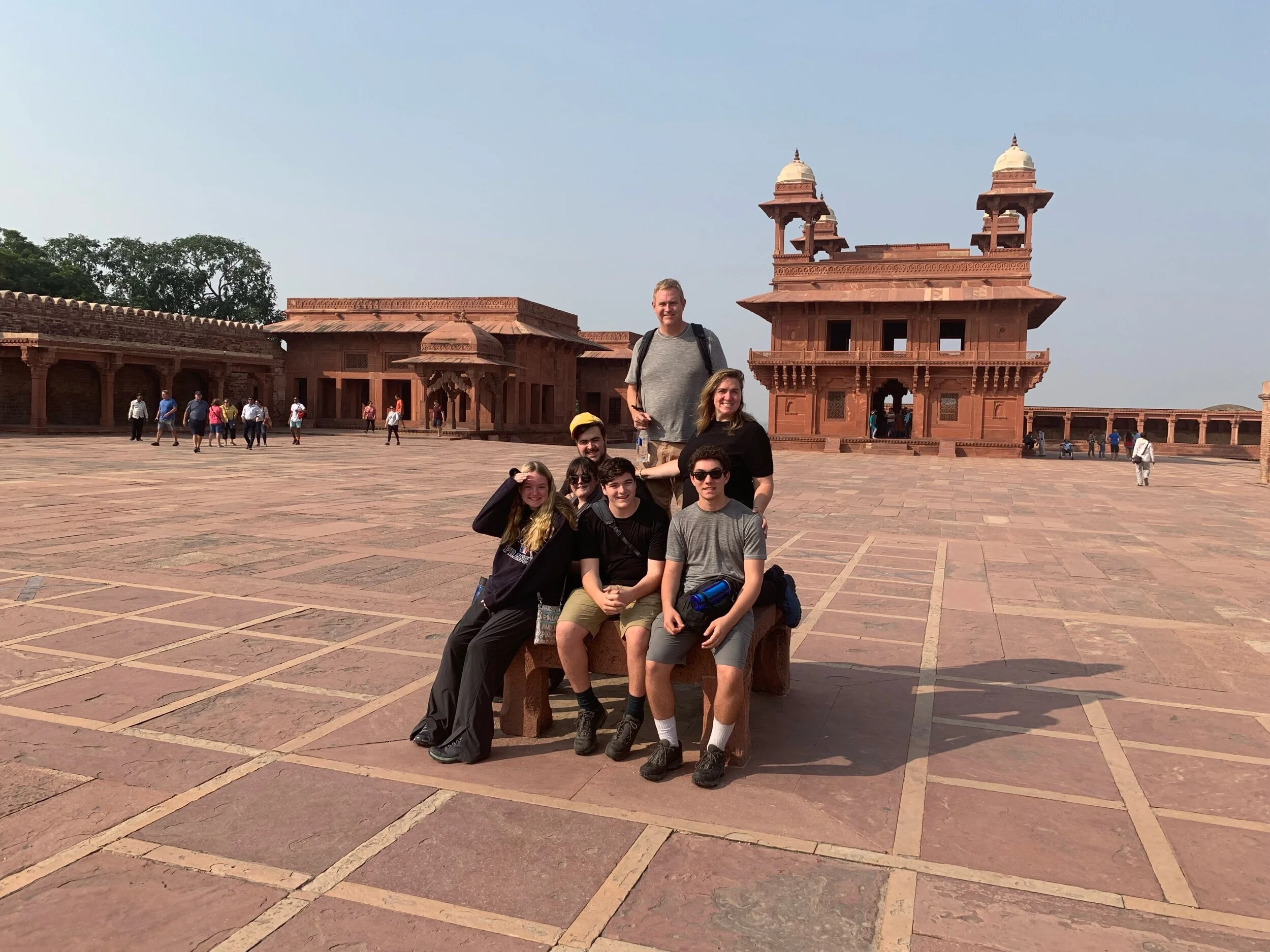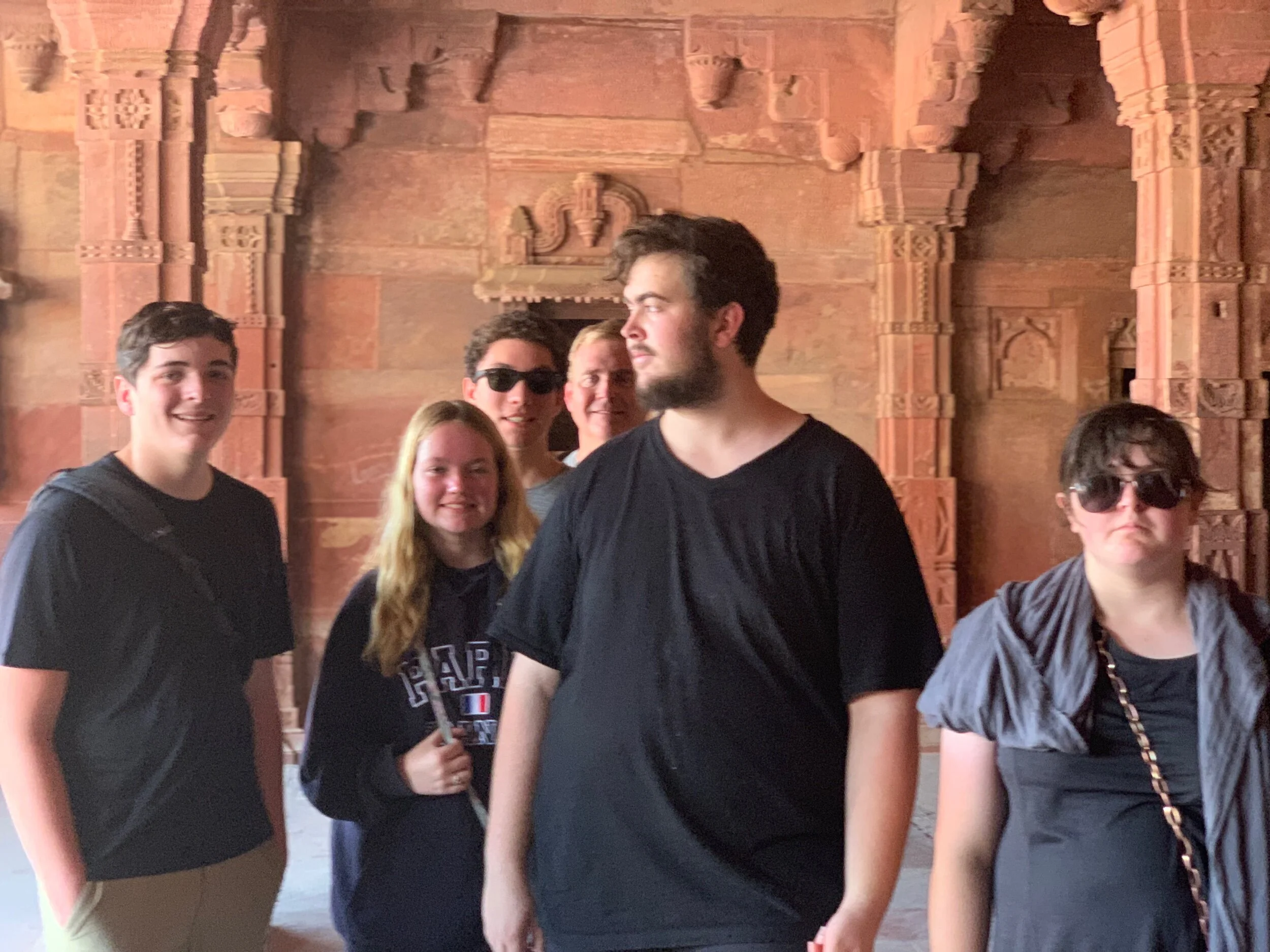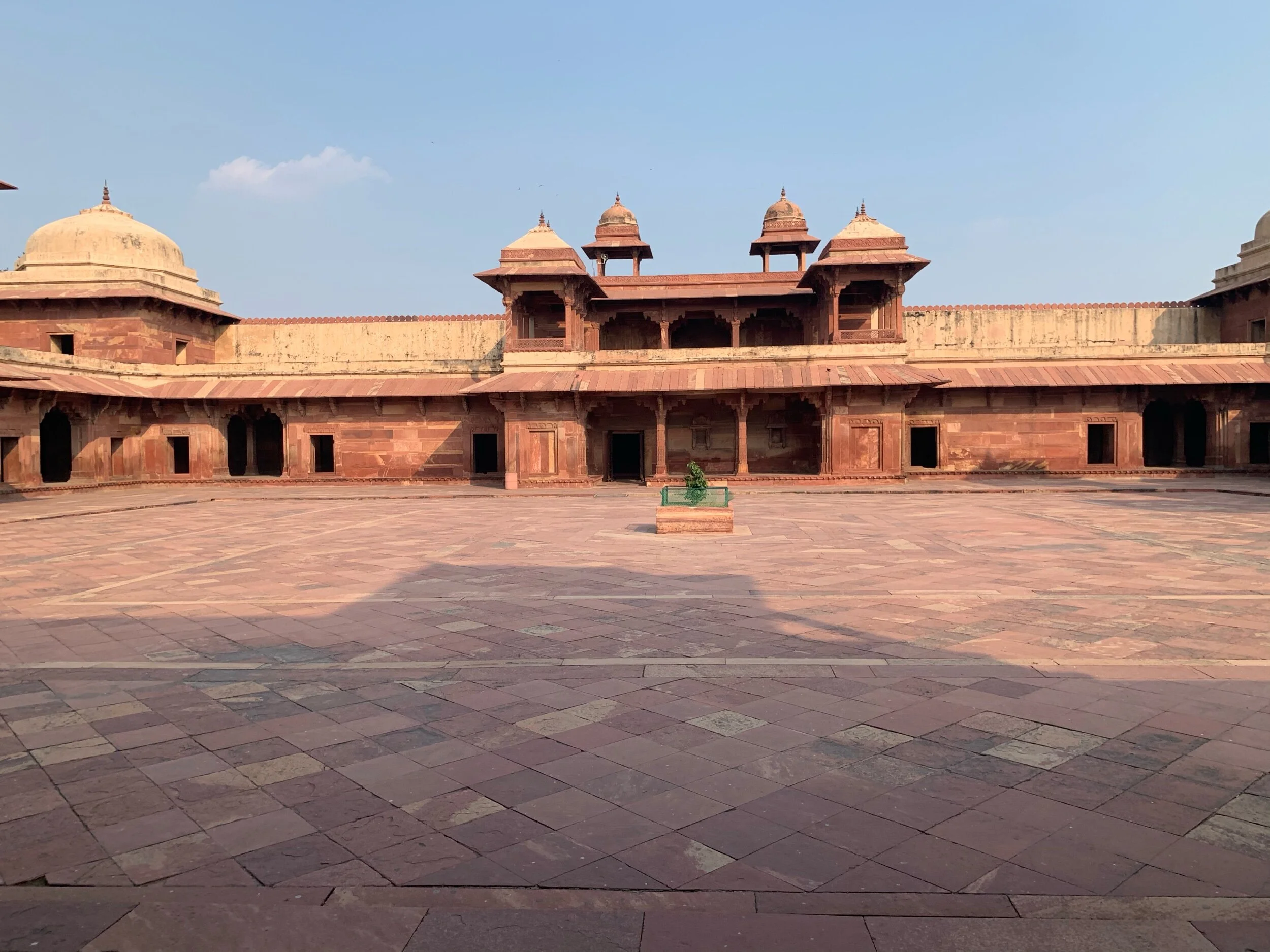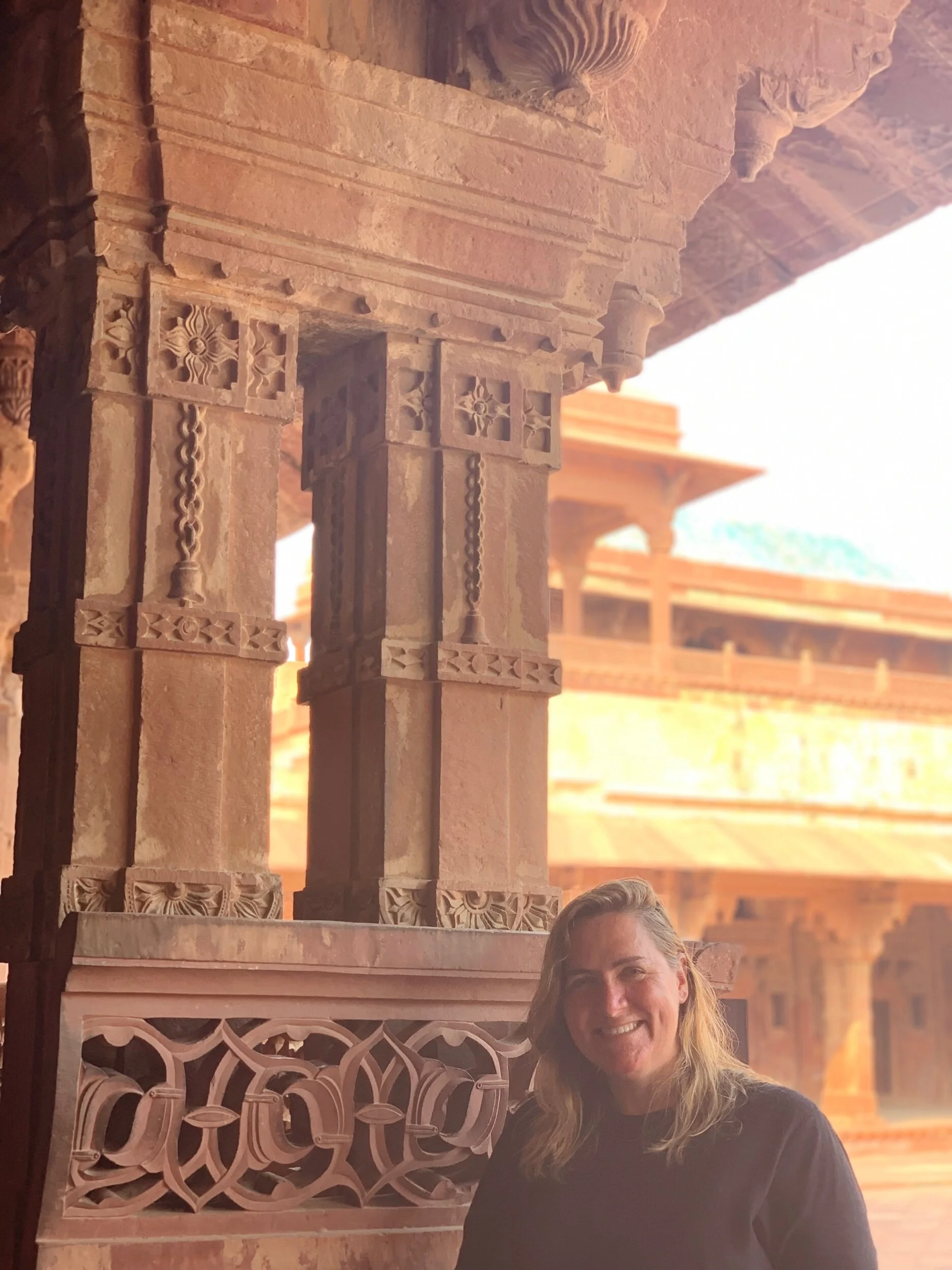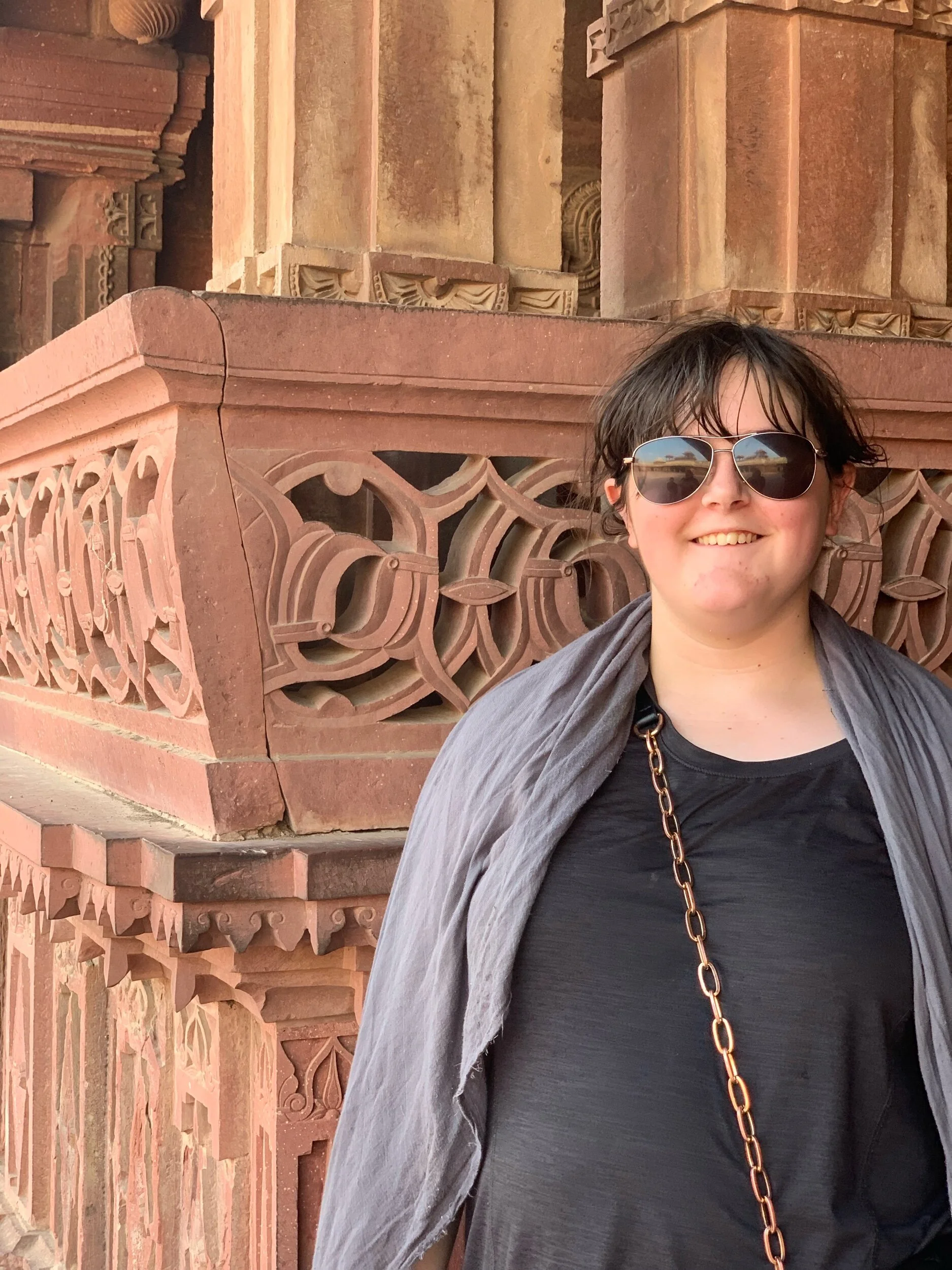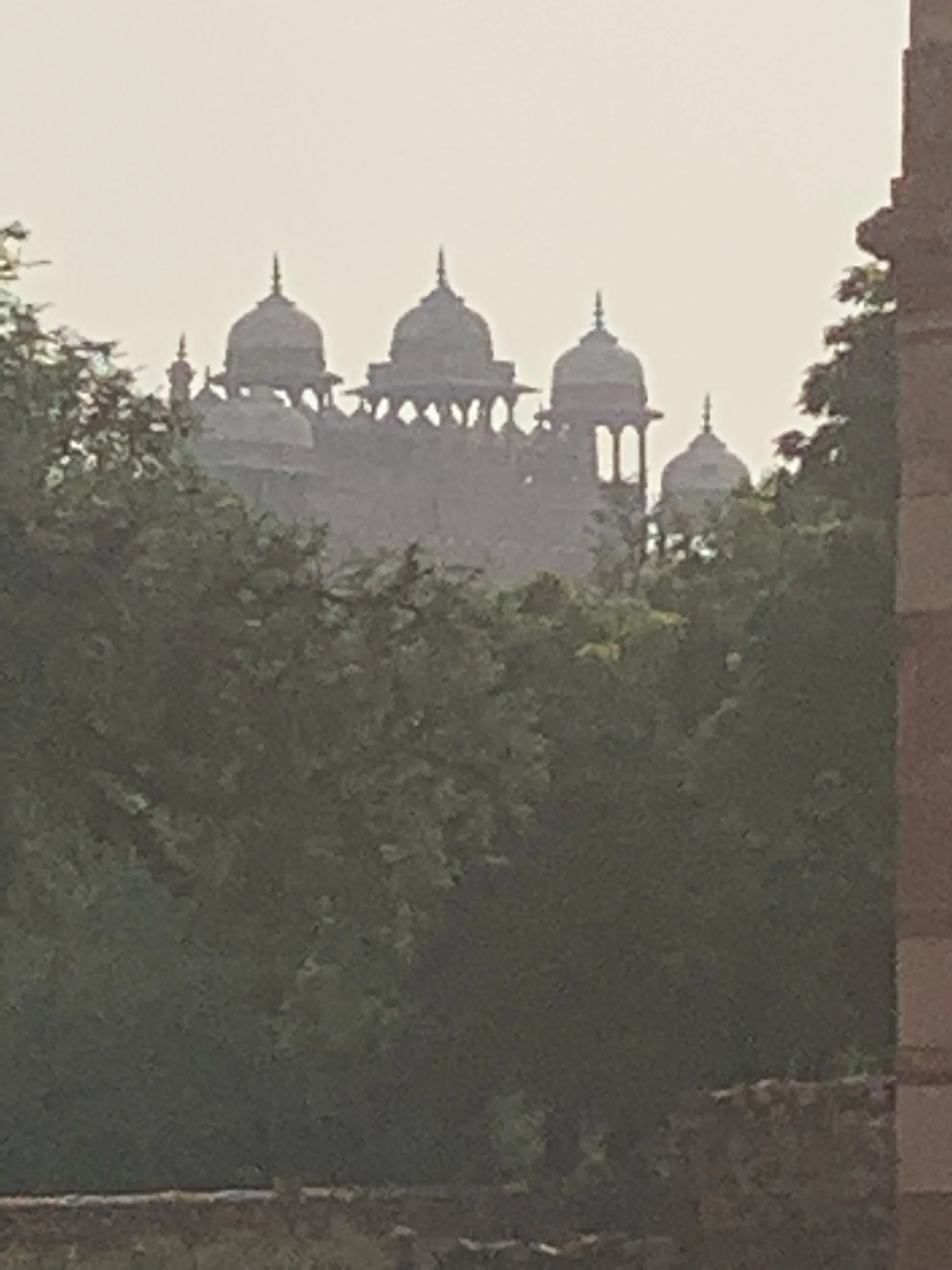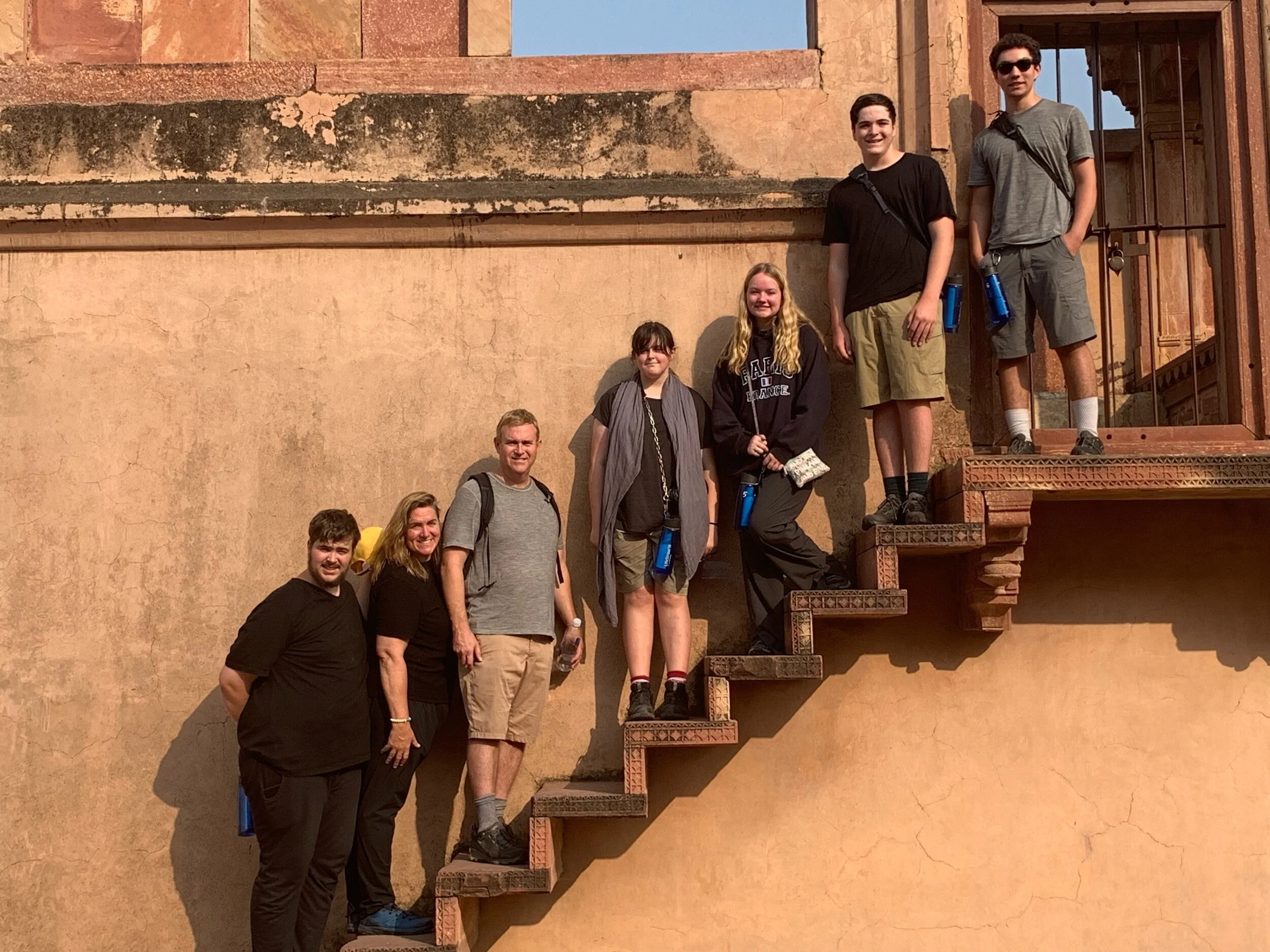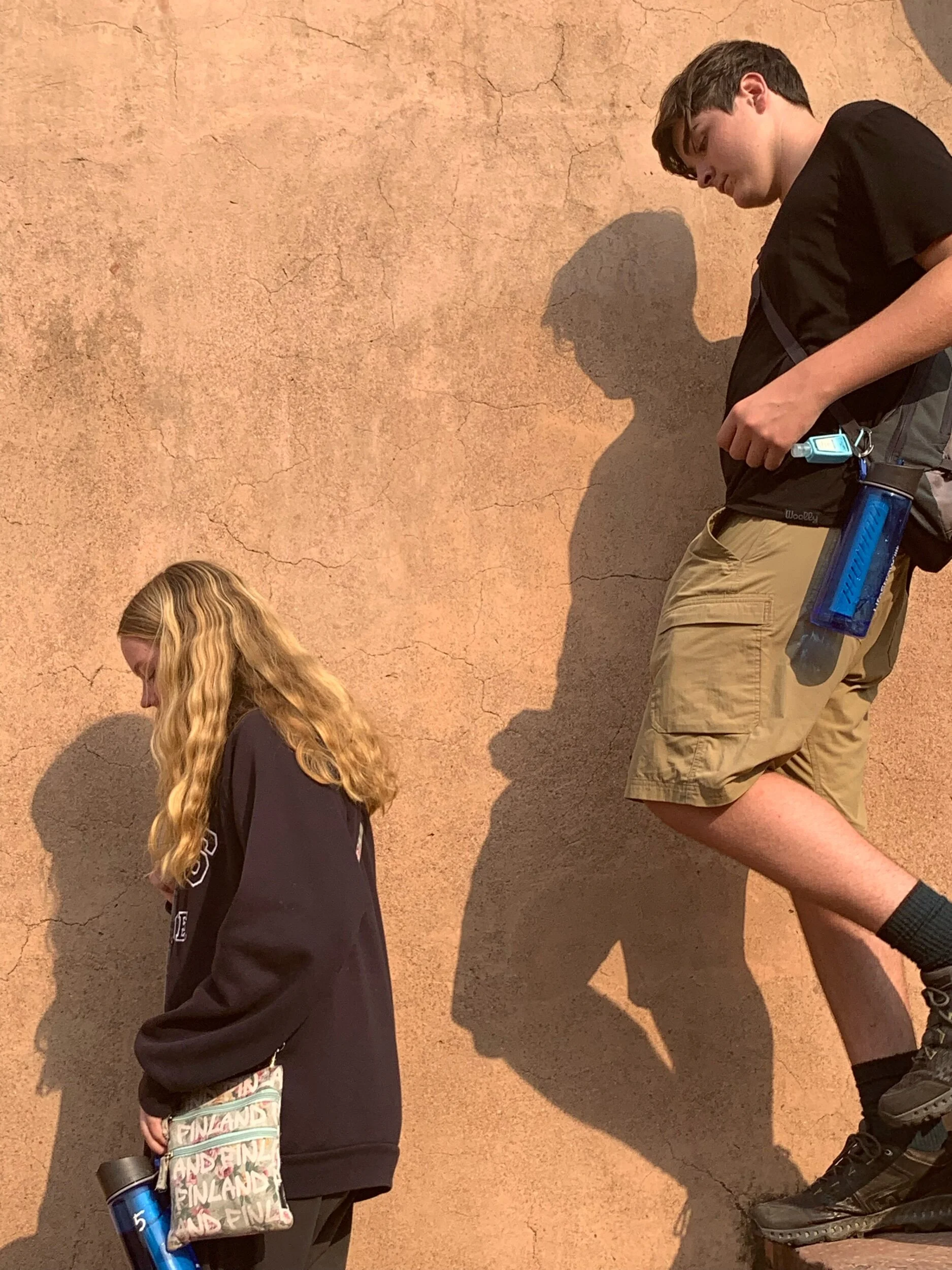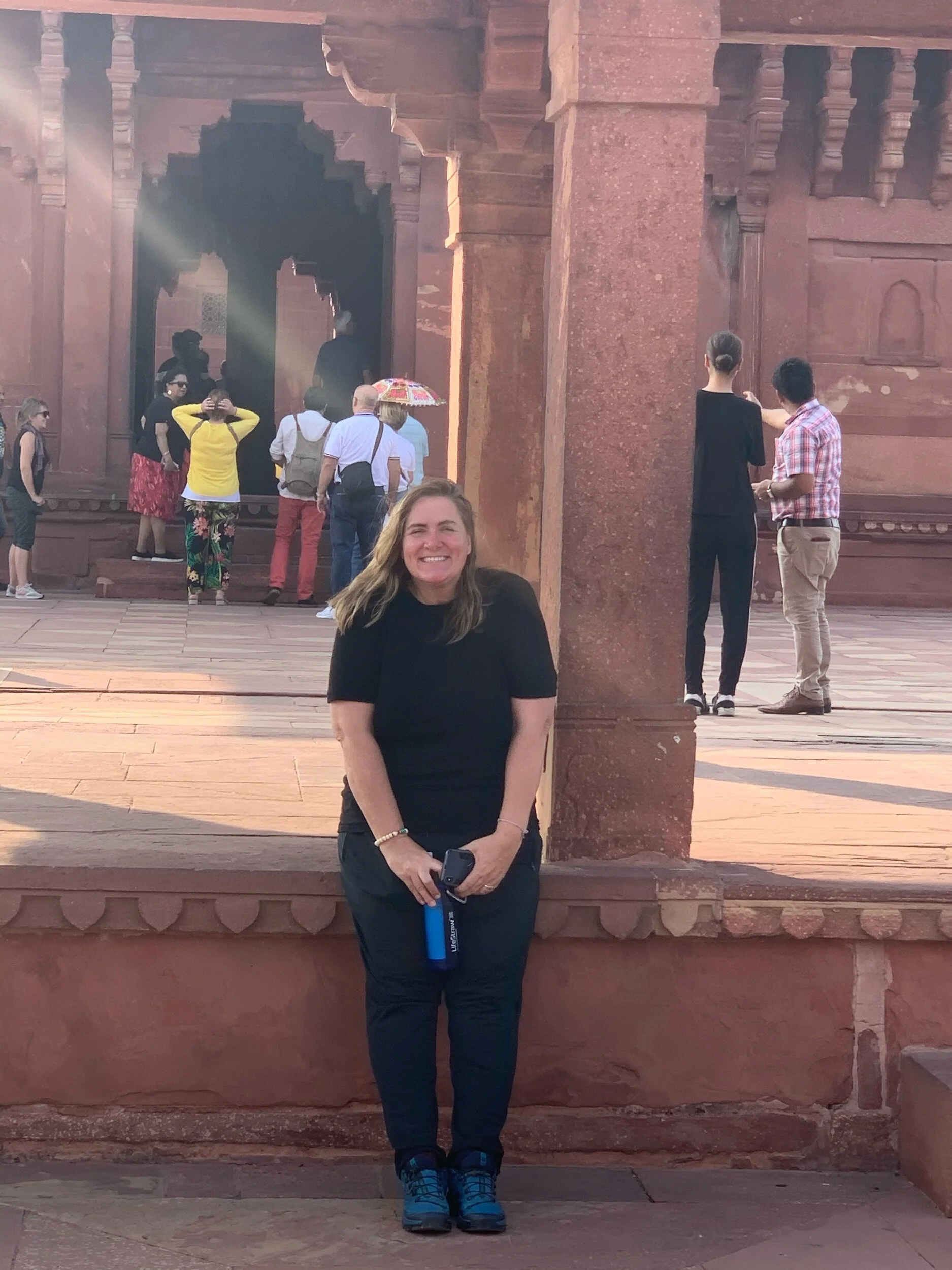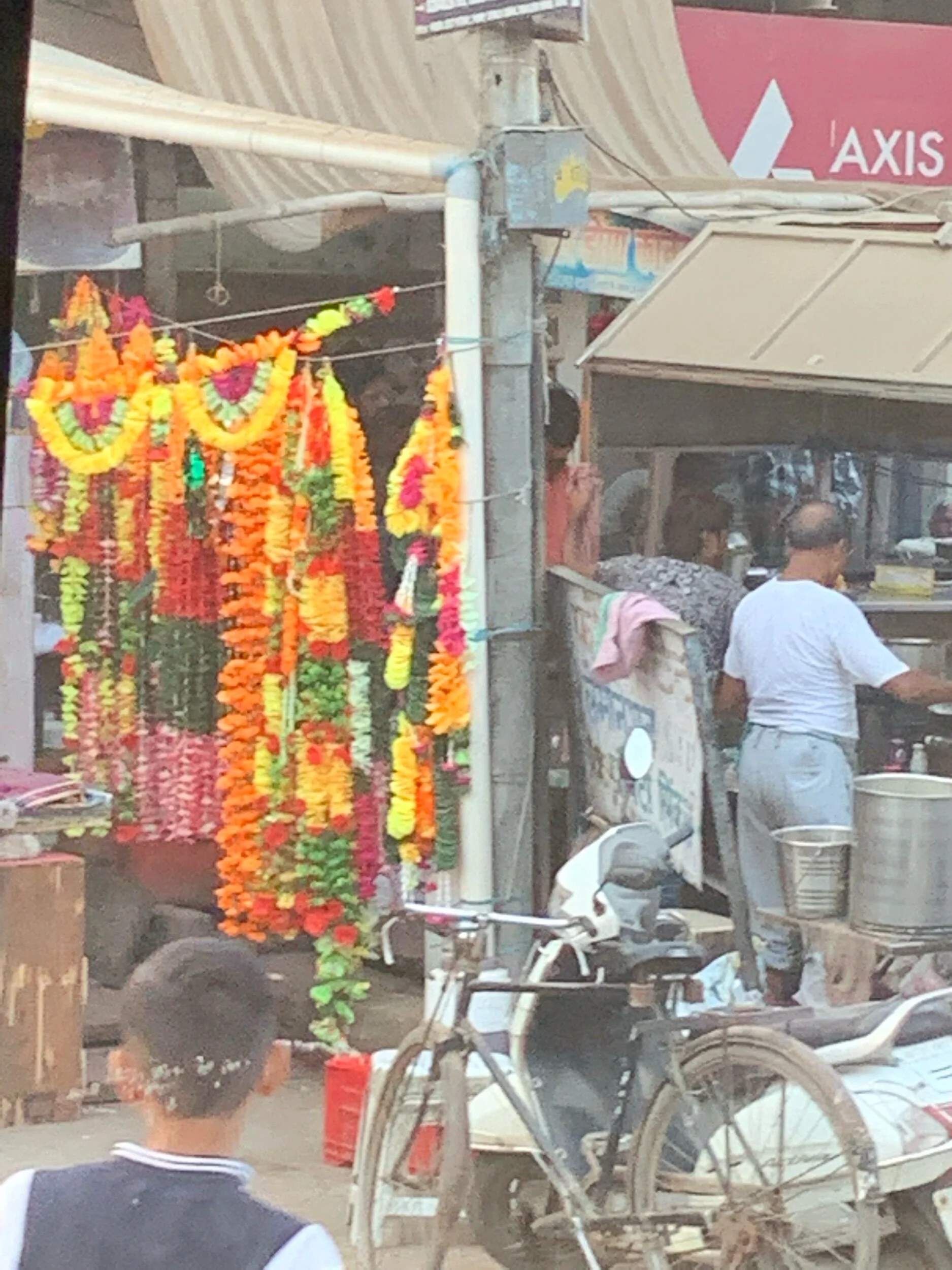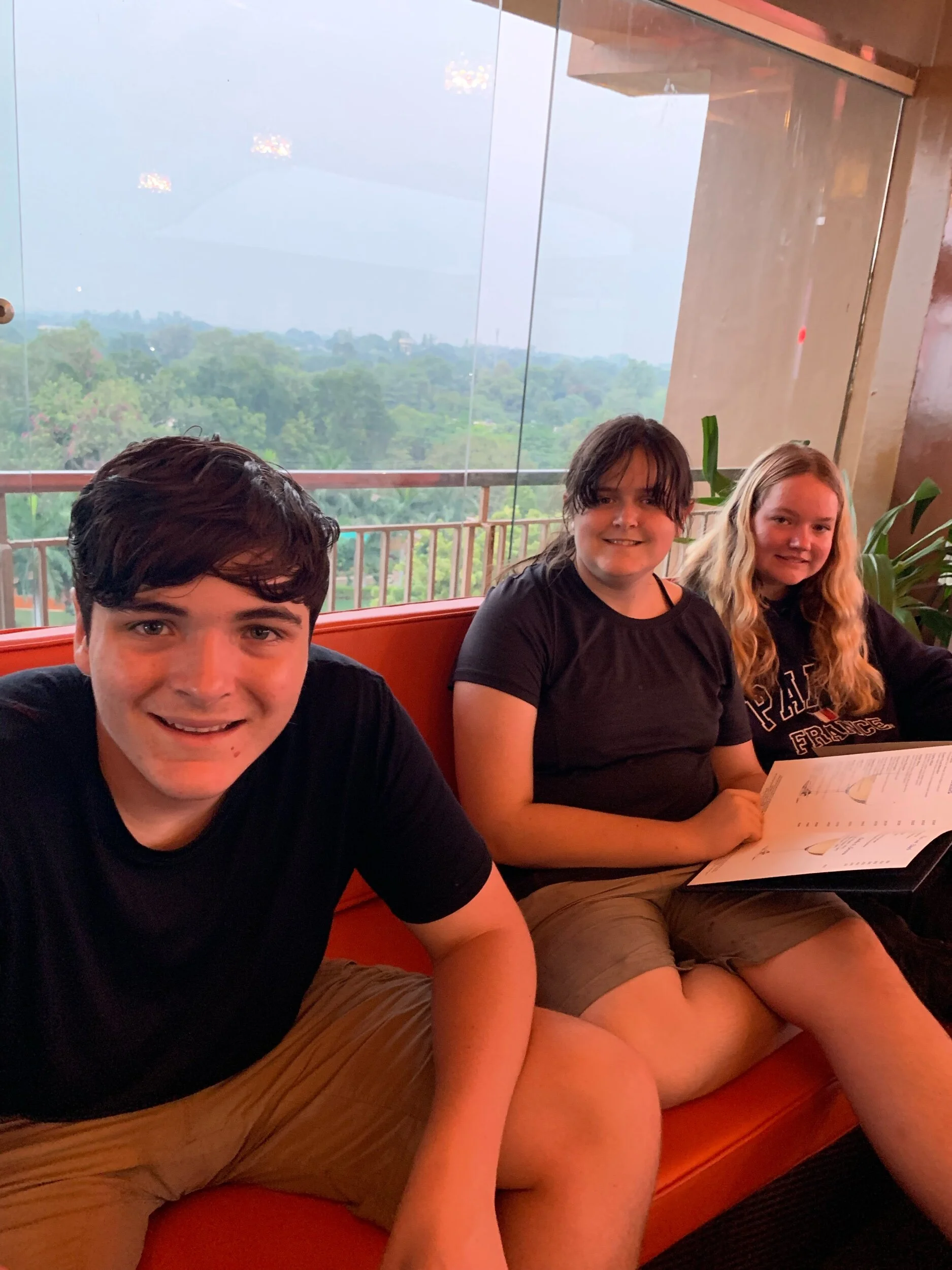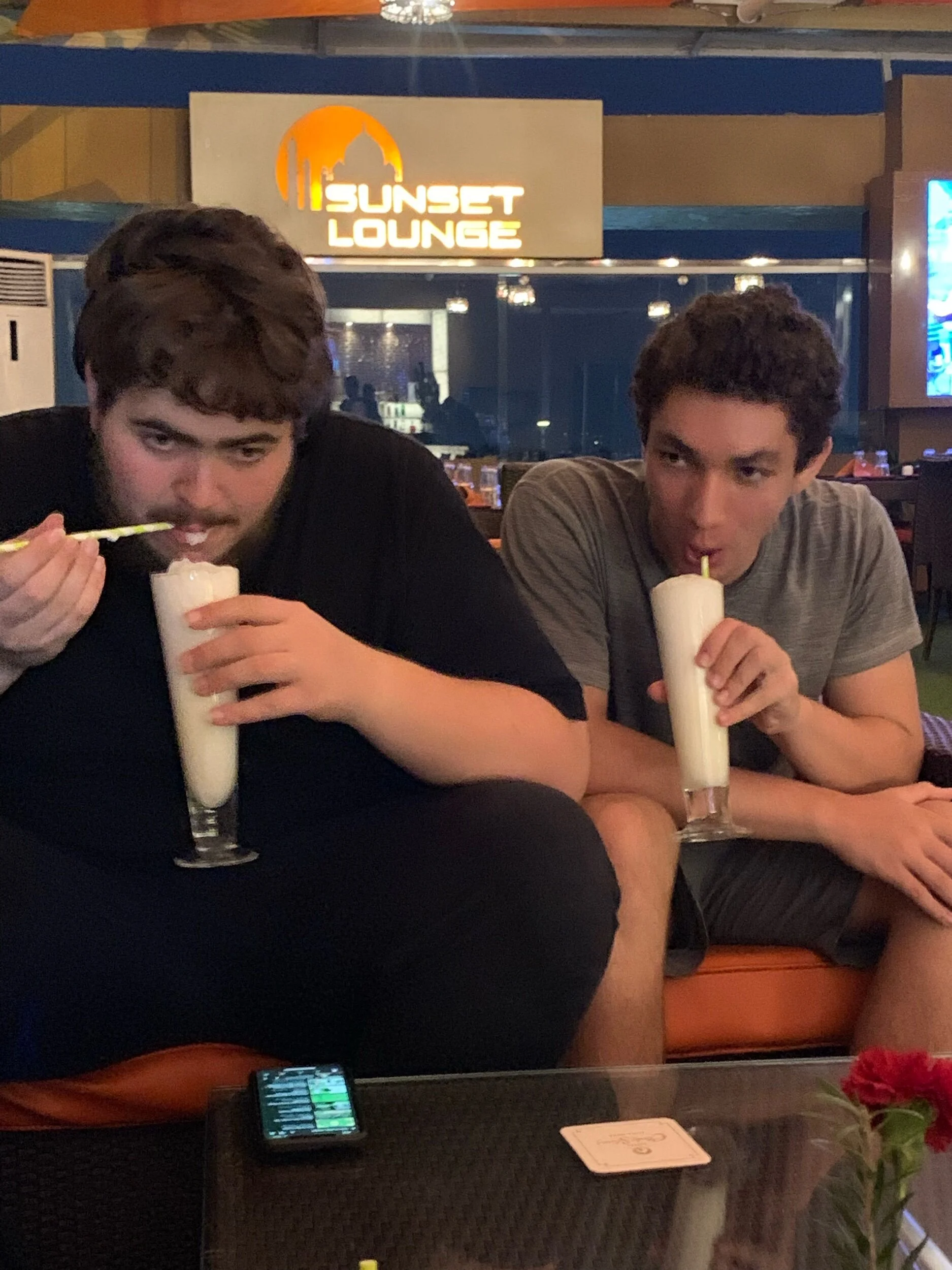10-18-19 - Agra - Military guided tour of the Ghost City
/Day 124. Kyle & Leanne joint blog.
The 5:18 am Muslim prayer call echoes off the hotel’s marble hallways, helping us get up for our early morning ride from Jaipur to Agra. A porter per person helps us with our bags from room to bus and now Kyle doesn’t know how now to tip 7 people simultaneously. We have given up trying to fend them off so we can carry our own bags by this point.
As our bus leaves the hotel, we must wait for a camel and buggy to pass first. Our Jaipur guide shared the numbers of animals in the road have decreased significantly in the last 5 years which certainly prevents accidents, but as a tourist, it’s a wonderful reminder of a simpler time. We head to our final leg of our golden triangle tour here in India – Agra. The drive is surprising uneventful providing no fodder for the blog.
We have a scheduled stop about an hour outside of Agra to visit the UNESCO site of Fatehpur Sikki. The bus pulls up in the middle of nowhere, the door slide open and there appearing in front of us is our Agra guide. Wow, how did we do that? It was like he materialized out of the thin air. He starts barking out commands, “you, mam, out of the bus, stand over there,” and “you sir, up, off the seat, out the bus, line up over there.”
Kyle wonders if we’ve accidentally ended up on the set of an Indian reality tv series that lures unsuspecting tourists into joining the Indian military.
Thus we commence our military tour of Fatehpur Sikki, the palace complex that houses the former palace of the third Mugil King, Akbar the Great. By the age of 19 (just five years into his rule), Akbar had unified 80 percent of India at the end of the 1500s, a feat not achieved earlier. As a Mugil King, he was originally Muslim but had three wives - a Muslim wife, a Christian wife and a Hindu wife. He was very open about religion and did not force his wives to convert to Muslim. After exposure to the three different religions, he decided he would start his own religion in which people would worship one God which was….you guessed it, the King himself! The guide tells us that he didn’t force anyone to convert to his religion and no special favor was earned by following his religion so he ended up with 12 followers before he disbanded his attempt as being God in addition to King and went back to being a Muslim.
So at this UNESCO palace he built each wife a separate palace. However, it turned it out it wasn’t religion that determined the size of the wife’s palace but the children. His Muslim wife was unable to have children and the poor woman got a “palace” the size of a shoebox. It was literally only one room in a remote corner of the whole palace complex. The Christian wife bore him 2 daughters but no sons so she got a palace about 3-4 times bigger than the Muslim wife. The Hindu wife born his three sons which was critical to carrying on the bloodline so got she a palace about 6x bigger than the other two combined. Guess we know which wife the king preferred. The Muslim wife with her comparably small quarters must have really annoyed the King at some point in addition to not bearing any children. Kyle notes that he wouldn’t have wanted to have been the King on the day they moved into the new palace and the Muslim wife saw here shoebox compared to the other wives’ palaces.
The structures had art and architectural influences from six different religions. It’s a wonderful insight into the life of a king as the guide does a great job helping us visualize his day to day. We determine that Akbar must have had a little ADHD in him as had move the capital from Agra to this city but shortly after it was completed, he decided to move the capital again to a place in present day Pakistan. We also suspect, the Muslim wife and her “shoebox” palace may have had something to do with it and she likely demanded the move and that he better built her a bigger palace in the next capital. After they left Fatehpur Sikk, the abandoned palace became known as the “Ghost City.”
Under the “what else will we be hawked next” category, this palace didn’t disappoint. Along with the typical bracelets and mini wooden elephant solicitors, two guys standing near a huge green pool of water offered to have one dive 10+ meters into the algae ridden, green glowing water for just a 100 rupees (USD $1.50) “donation”. Yuck! While it would have been a spectacle to witness, the last thing we wanted to do would be to contribute to this man’s toxicity levels and have him end up in the hospital on account of us, so we respectfully declined.
Now, along with that offer and the trained monkey that crawled up the side of our bus to ask for money on the way to Agra, we pretty much had an eventful enough day in the “believe it or not category”. The kid’s mouths drop when they see the teenage boy with his pet monkey. “Not happening. No way. Not possible.” comes across Leanne’s lips after she sees the beginning of a glimmer of unique pet possibility hit Ashlynn’s and Justin’s eyes. They didn’t even get to ask. Although Kyle notes it would cause quite a stir if the kids brought a pet monkey from Nepal or India to school with them next year when we return.
We reach Agra after sunset. We have a commitment to yet another early night in because we have a 545 am meet-up time to see something darn amazing tomorrow. The hotel has a nice restaurant lounge on the 5th floor where we catch a glimpse of tomorrow’s main event and have dinner. Stay tuned.


